 Search by Keyword
Sign Up Below for our MONTHLY BEATLES TRIVIA QUIZ!
|
“GOT TO GET YOU INTO MY LIFE”
(John Lennon – Paul McCartney)
By 1966, The Beatles were determined to take their audience by surprise. They may have touched on using session musicians on the previous two albums, but “Revolver” appeared to break open the floodgates. A string octet on “Eleanor Rigby,” a French horn on “For No One,” Indian instrumentation on “Love You To,” and now a five-piece brass overdub for the soul-tinged “Got To Get You Into My Life.”
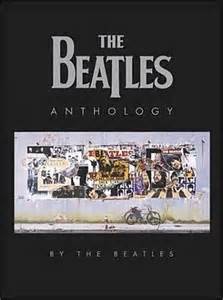 While The Beatles always thought of themselves as “a little R&B combo,” as Paul McCartney revealed in the Anthology documentary, this influence only came through by feel, most audiences describing their music as a new sound from across the pond, “The British Invasion.” The band therefore decided, since they then deteermined to utilize the recording studio as their primary artistic platform, to bring this influence to a strident new level. While The Beatles always thought of themselves as “a little R&B combo,” as Paul McCartney revealed in the Anthology documentary, this influence only came through by feel, most audiences describing their music as a new sound from across the pond, “The British Invasion.” The band therefore decided, since they then deteermined to utilize the recording studio as their primary artistic platform, to bring this influence to a strident new level.
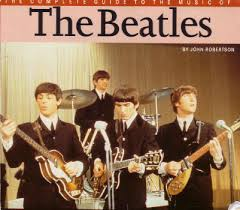 Although the song evolved tremendously during its recording, the end result was undeniable. This powerhouse composition was straight out of the Stax/Motown genre that The Beatles loved. As author John Robertson writes in his 1994 book “The Complete Guide To The Music Of The Beatles,” their 1966 album “’Revolver’ revealed The Beatles as master of any musical genre they cared to touch.” And just wait until 1967! Although the song evolved tremendously during its recording, the end result was undeniable. This powerhouse composition was straight out of the Stax/Motown genre that The Beatles loved. As author John Robertson writes in his 1994 book “The Complete Guide To The Music Of The Beatles,” their 1966 album “’Revolver’ revealed The Beatles as master of any musical genre they cared to touch.” And just wait until 1967!
Songwriting History
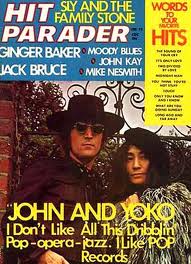 When asked throughout the years, John appeared to waver about his involvement as songwriter on “Got To Get You Into My Life.” His 1968 reply sounded as if he had a good degree of input: “We were doing our Tamla/Motown bit. You see, we’re influenced by whatever’s going on. Even if we’re not influenced, we’re all going that way at a certain time.” By the time of John's 1972 Hit Parader Magazine interview, he backpedaled a little bit: “Paul. I think George and I helped with some of the lyric. I’m not sure.” When asked throughout the years, John appeared to waver about his involvement as songwriter on “Got To Get You Into My Life.” His 1968 reply sounded as if he had a good degree of input: “We were doing our Tamla/Motown bit. You see, we’re influenced by whatever’s going on. Even if we’re not influenced, we’re all going that way at a certain time.” By the time of John's 1972 Hit Parader Magazine interview, he backpedaled a little bit: “Paul. I think George and I helped with some of the lyric. I’m not sure.”
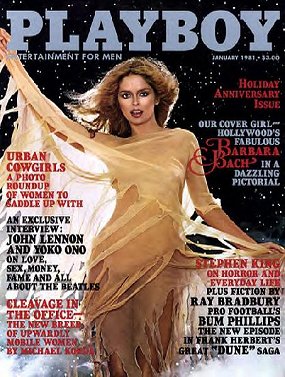 By the time of his 1980 Playboy Magazine interview, he renounced any involvement in writing the song: "’Got To Get You Into My Life’ was Paul’s again. I think that was one of his best songs, too, because the lyrics are good – and I didn’t write them. When I say that he could write lyrics if he took the effort, here’s an example. It actually described his experience taking acid. I think that’s what he’s talking about. I couldn’t swear to it, but I think it was a result of that." It appears that Paul first took LSD in December of 1965 with friends Viv Prince (of the group The Pretty Things) and Tara Browne (the 21-year-old Guinness heir who was killed in a car crash later that month and was reportedly an inspiration for "A Day In The Life"). Therefore, John's assumption that "Got To Get You Into My Life" was inspired by his LSD experience could have been plausible in the timeline. By the time of his 1980 Playboy Magazine interview, he renounced any involvement in writing the song: "’Got To Get You Into My Life’ was Paul’s again. I think that was one of his best songs, too, because the lyrics are good – and I didn’t write them. When I say that he could write lyrics if he took the effort, here’s an example. It actually described his experience taking acid. I think that’s what he’s talking about. I couldn’t swear to it, but I think it was a result of that." It appears that Paul first took LSD in December of 1965 with friends Viv Prince (of the group The Pretty Things) and Tara Browne (the 21-year-old Guinness heir who was killed in a car crash later that month and was reportedly an inspiration for "A Day In The Life"). Therefore, John's assumption that "Got To Get You Into My Life" was inspired by his LSD experience could have been plausible in the timeline.
Concerning authorship, Paul concurred in 1984: “That’s mine – I wrote it.” But as to its lyrical inspiration, he corrects John Lennon’s suspicions in the “Beatles Anthology” book by saying, “It was a song about pot, actually.”
 Paul goes into much greater detail in his book “Many Years From Now,” saying: “’Got To Get You Into My Life’ was one I wrote when I had first been introduced to pot. I’d been a rather straight working-class lad but when we started to get into pot it seemed to me to be quite uplifting. It didn’t seem to have too many side effects like alcohol or some of the other stuff, like pills, which I pretty much kept off. I kind of liked marijuana. I didn’t have a hard time with it and to me it was mind-expanding, literally mind-expanding.” Paul goes into much greater detail in his book “Many Years From Now,” saying: “’Got To Get You Into My Life’ was one I wrote when I had first been introduced to pot. I’d been a rather straight working-class lad but when we started to get into pot it seemed to me to be quite uplifting. It didn’t seem to have too many side effects like alcohol or some of the other stuff, like pills, which I pretty much kept off. I kind of liked marijuana. I didn’t have a hard time with it and to me it was mind-expanding, literally mind-expanding.”
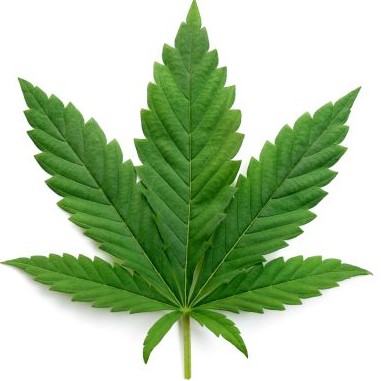 “So ‘Got To Get You Into My Life’ is really a song about that, it’s not to a person, it’s actually about pot. It’s saying, ‘I’m going to do this. This is not a bad idea.’ So it’s actually an ode to pot, like someone else might write an ode to chocolate or a good claret. It wouldn’t be the first time in history someone’s done it, but in my case it was the first flush of pot. I haven’t really changed my opinion too much except, if anyone asks me for real advice, it would be, ‘Stay straight. That is actually the best way.’ But in a stressful world I still would say that pot was one of the best of the tranquilizing drugs; I have drunk and smoked pot and of the two I think pot is less harmful. People tend to fall asleep on it rather than go and commit murder, so it’s always seemed to me a rather benign one. In my own mind, I’ve always likened it to the peace pipe of the Indians. Westerners used to call it ‘native tobacco.’ In the sixties we all thought this was what they were smoking.” “So ‘Got To Get You Into My Life’ is really a song about that, it’s not to a person, it’s actually about pot. It’s saying, ‘I’m going to do this. This is not a bad idea.’ So it’s actually an ode to pot, like someone else might write an ode to chocolate or a good claret. It wouldn’t be the first time in history someone’s done it, but in my case it was the first flush of pot. I haven’t really changed my opinion too much except, if anyone asks me for real advice, it would be, ‘Stay straight. That is actually the best way.’ But in a stressful world I still would say that pot was one of the best of the tranquilizing drugs; I have drunk and smoked pot and of the two I think pot is less harmful. People tend to fall asleep on it rather than go and commit murder, so it’s always seemed to me a rather benign one. In my own mind, I’ve always likened it to the peace pipe of the Indians. Westerners used to call it ‘native tobacco.’ In the sixties we all thought this was what they were smoking.”
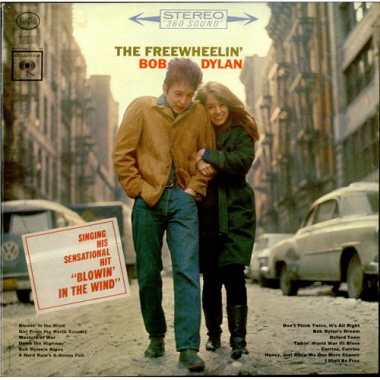 As for the time of writing, Paul’s quote that the song was “one I wrote when I had first been introduced to pot” dates it to as early as August of 1964 when Bob Dylan came to The Beatles New York Hotel room with the drug. Paul discusses this event in his 2021 book "The Lyrics" by explaining, "Exactly what happened is that we were in a hotel suite...and Bob Dylan turned up with his roadie, the kind of guy who was more than a roadie - an assistant, friend, sidekick...We were just drinking, as usual, having a little party. We'd ordered drinks from room service - scotch and Coke and French wine were our thing back then - and Bob had disappeared into a back room. We thought maybe he'd gone to the toilet, but then Ringo came out of that back room, looking a bit strange. He said, 'I've just been with Bob, and he's got some pot,' or whatever you called it then. And we said, 'Oh, what's it like?' and he said, 'Well, the ceiling is kind of moving; it's sort of coming down.' And that was enough." As for the time of writing, Paul’s quote that the song was “one I wrote when I had first been introduced to pot” dates it to as early as August of 1964 when Bob Dylan came to The Beatles New York Hotel room with the drug. Paul discusses this event in his 2021 book "The Lyrics" by explaining, "Exactly what happened is that we were in a hotel suite...and Bob Dylan turned up with his roadie, the kind of guy who was more than a roadie - an assistant, friend, sidekick...We were just drinking, as usual, having a little party. We'd ordered drinks from room service - scotch and Coke and French wine were our thing back then - and Bob had disappeared into a back room. We thought maybe he'd gone to the toilet, but then Ringo came out of that back room, looking a bit strange. He said, 'I've just been with Bob, and he's got some pot,' or whatever you called it then. And we said, 'Oh, what's it like?' and he said, 'Well, the ceiling is kind of moving; it's sort of coming down.' And that was enough."
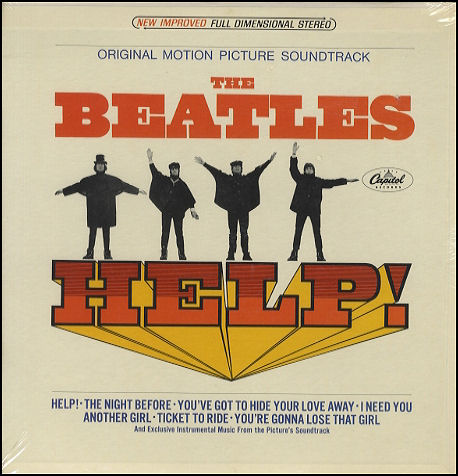 "After Ringo said that, the other three of us all leapt into the back room where Dylan was, and he gave us a puff on the joint. And you know how a lot of people take a puff and think it's not working? We expected something instantaneous, so we kept puffing away and saying, 'It's not working, is it?' And suddenly it was working. And we were giggling, laughing at each other. I remember George trying to get away, and I was sort of running after him. It was hilarious, like a cartoon chase. We thought, 'Wow, this is pretty amazing, this stuff.' And so it became part of our repertoire from then on. It was something that entered our lives, and I thought it would be a good idea to write a song with 'Got to get you into my life,' and only I would know that I was talking about pot. Many years later I told people what it was about...It was very joyous at the time." During the filming of their movie "Help!", which began in February of 1965, marijuana had definitely taken hold in the Beatles camp. "We showed up a bit stoned," Paul remembers, "smiled a lot and hoped we'd get through it. We giggled a lot." "After Ringo said that, the other three of us all leapt into the back room where Dylan was, and he gave us a puff on the joint. And you know how a lot of people take a puff and think it's not working? We expected something instantaneous, so we kept puffing away and saying, 'It's not working, is it?' And suddenly it was working. And we were giggling, laughing at each other. I remember George trying to get away, and I was sort of running after him. It was hilarious, like a cartoon chase. We thought, 'Wow, this is pretty amazing, this stuff.' And so it became part of our repertoire from then on. It was something that entered our lives, and I thought it would be a good idea to write a song with 'Got to get you into my life,' and only I would know that I was talking about pot. Many years later I told people what it was about...It was very joyous at the time." During the filming of their movie "Help!", which began in February of 1965, marijuana had definitely taken hold in the Beatles camp. "We showed up a bit stoned," Paul remembers, "smiled a lot and hoped we'd get through it. We giggled a lot."
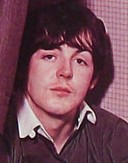 While the framework of "Got To Get You Into My Life" may have begun at that time, it seems quite far-fetched to say that a completed song of this caliber would have been passed over for the next three Beatles albums. We can confidently assume, therefore, that the composition was completed and readied for recording sometime around March of 1966, just before its first EMI session. While the framework of "Got To Get You Into My Life" may have begun at that time, it seems quite far-fetched to say that a completed song of this caliber would have been passed over for the next three Beatles albums. We can confidently assume, therefore, that the composition was completed and readied for recording sometime around March of 1966, just before its first EMI session.

EMI Studio Two
Recording History
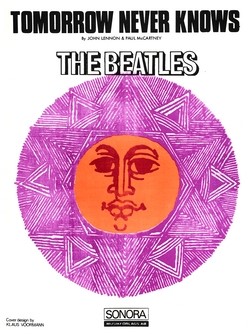 April 7th, 1966, this being only the second recording session for what became the “Revolver” album (and thereby being only their second EMI Studios recording session of the year), was the date they began work on McCartney’s “Got To Get You Into My Life.” The afternoon/evening session of this day was used to complete the first song for the album, the highly innovative track “Tomorrow Never Knows,” but the later session of the evening began at 8:15 pm (after an hour break from the previous session) in EMI Studio Three. April 7th, 1966, this being only the second recording session for what became the “Revolver” album (and thereby being only their second EMI Studios recording session of the year), was the date they began work on McCartney’s “Got To Get You Into My Life.” The afternoon/evening session of this day was used to complete the first song for the album, the highly innovative track “Tomorrow Never Knows,” but the later session of the evening began at 8:15 pm (after an hour break from the previous session) in EMI Studio Three.
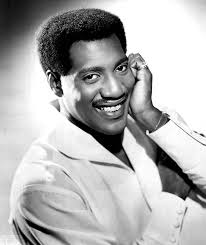 Although Lennon has described this song by saying "we were doing our Tamla/Motown bit" and by Paul as “one of the first times we used soul trumpets,” "Got To Get You Into My Life" was a far cry from being "soulful" by the end of this day's session. In fact, it had been announced that The Beatles were to actually record at least some of their next album's tracks at the legendard Stax Studios in Memphis due to their love of the recordings being produced there by artists such as Wilson Picket, Booker T & The MG's, Sam and Dave and Otis Redding. When this arrangement failed to materialize (as explained below), they reevaluated their arrangement of "Got To Get You Into My Life" and started recording the song in their usual EMI Studios in London. Interestingly, it was then proposed to record at Stax when the band was due to appear live in Memphis during their American tour in August of 1966, which was after "Revolver" had been released and therfore earmarked for their next album. This, of course, also didn't materialize. Although Lennon has described this song by saying "we were doing our Tamla/Motown bit" and by Paul as “one of the first times we used soul trumpets,” "Got To Get You Into My Life" was a far cry from being "soulful" by the end of this day's session. In fact, it had been announced that The Beatles were to actually record at least some of their next album's tracks at the legendard Stax Studios in Memphis due to their love of the recordings being produced there by artists such as Wilson Picket, Booker T & The MG's, Sam and Dave and Otis Redding. When this arrangement failed to materialize (as explained below), they reevaluated their arrangement of "Got To Get You Into My Life" and started recording the song in their usual EMI Studios in London. Interestingly, it was then proposed to record at Stax when the band was due to appear live in Memphis during their American tour in August of 1966, which was after "Revolver" had been released and therfore earmarked for their next album. This, of course, also didn't materialize.
 As it was, five takes of the rhythm track were attempted on this day comprising George on acoustic guitar, Ringo on drums (primarily on hi-hat and kick drum) and Paul playing an organ that concentrated mostly on a single chord drone, all being recorded on track one of the four-track tape. With their recent infatuation with Eastern music, which habitually featured a drone as a backdrop, it’s no wonder that The Beatles incorporated this same element into the first three songs they introduced this year. The group had just completed “Tomorrow Never Knows” which featured George “droning” on a tamboura, while the next song introduced in the studio, George’s “Love You To,” also featured this Eastern ingredient as played by Paul. As it was, five takes of the rhythm track were attempted on this day comprising George on acoustic guitar, Ringo on drums (primarily on hi-hat and kick drum) and Paul playing an organ that concentrated mostly on a single chord drone, all being recorded on track one of the four-track tape. With their recent infatuation with Eastern music, which habitually featured a drone as a backdrop, it’s no wonder that The Beatles incorporated this same element into the first three songs they introduced this year. The group had just completed “Tomorrow Never Knows” which featured George “droning” on a tamboura, while the next song introduced in the studio, George’s “Love You To,” also featured this Eastern ingredient as played by Paul.
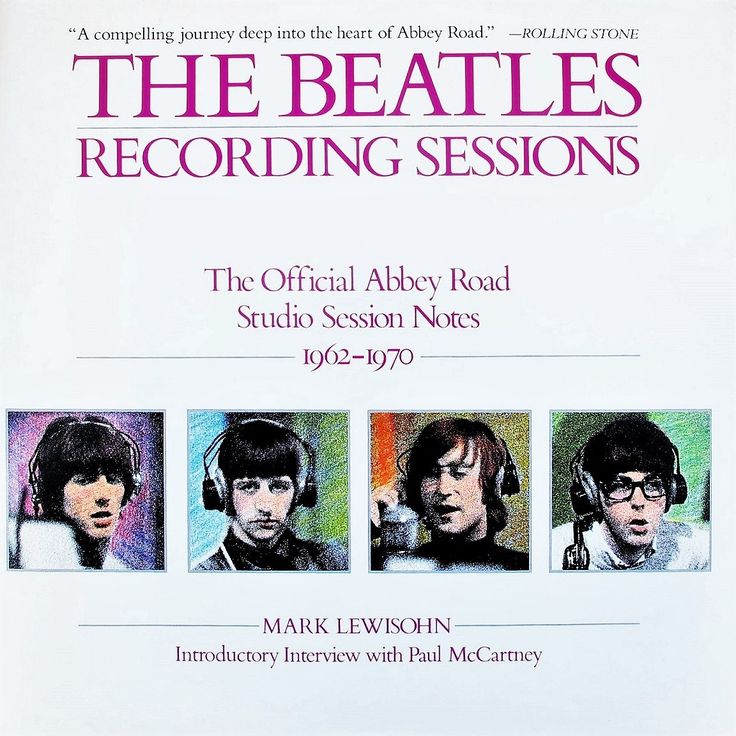 At any rate, they appeared open to ideas on how to present "Got To Get You Into My Life" at this early stage. As Mark Lewisohn documents in “The Beatles Recording Sessions”: “Before 'take four,' The Beatles and George Martin discussed alternative ideas,” this resulting in the incorporation of “a full drum intro, heavily limited.” As later included on Deluxe editions of "Revolver," the session tape for '"take five" begins with a discussion about how the organ should be heard at the beginning of the song. At any rate, they appeared open to ideas on how to present "Got To Get You Into My Life" at this early stage. As Mark Lewisohn documents in “The Beatles Recording Sessions”: “Before 'take four,' The Beatles and George Martin discussed alternative ideas,” this resulting in the incorporation of “a full drum intro, heavily limited.” As later included on Deluxe editions of "Revolver," the session tape for '"take five" begins with a discussion about how the organ should be heard at the beginning of the song.
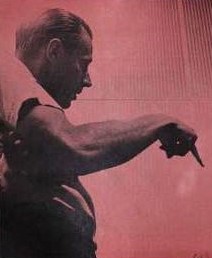 John Lennon interjects, "Why don't you start your note before the count-in?...One, two, then start, then count in from there, just so we don't get...." George Martin then confirms, "So we start by fading up, or bringing it up," to which Paul asks John, "Fade this up, you mean, fade the organ up?" John clarifies, "Not fade it up, just play it..." Paul then asks John, "So, how do we get into it?", Ringo adding, "Well, George carries on counting when you just start on three." Paul replies, "Then we fade it in, you mean, after." John answers, "Not fade in, just bring it in from wherever it comes in..." George Martin explains, "Just switch it in so you don't get any of the organ starting up. That's what I meant." Ringo then states, "Yeah, but if you do it before, we'll cut that bit off." Paul replies, "No, I don't see how you're going to get any different sound from that," to which John explains, "We can get the organ without the start of it." Paul wonders, "Why, though?" Lennon reiterates, "'Cause it won't be turned on." Seconds later, George Harrison counts in "take five" of the rhythm track. John Lennon interjects, "Why don't you start your note before the count-in?...One, two, then start, then count in from there, just so we don't get...." George Martin then confirms, "So we start by fading up, or bringing it up," to which Paul asks John, "Fade this up, you mean, fade the organ up?" John clarifies, "Not fade it up, just play it..." Paul then asks John, "So, how do we get into it?", Ringo adding, "Well, George carries on counting when you just start on three." Paul replies, "Then we fade it in, you mean, after." John answers, "Not fade in, just bring it in from wherever it comes in..." George Martin explains, "Just switch it in so you don't get any of the organ starting up. That's what I meant." Ringo then states, "Yeah, but if you do it before, we'll cut that bit off." Paul replies, "No, I don't see how you're going to get any different sound from that," to which John explains, "We can get the organ without the start of it." Paul wonders, "Why, though?" Lennon reiterates, "'Cause it won't be turned on." Seconds later, George Harrison counts in "take five" of the rhythm track.
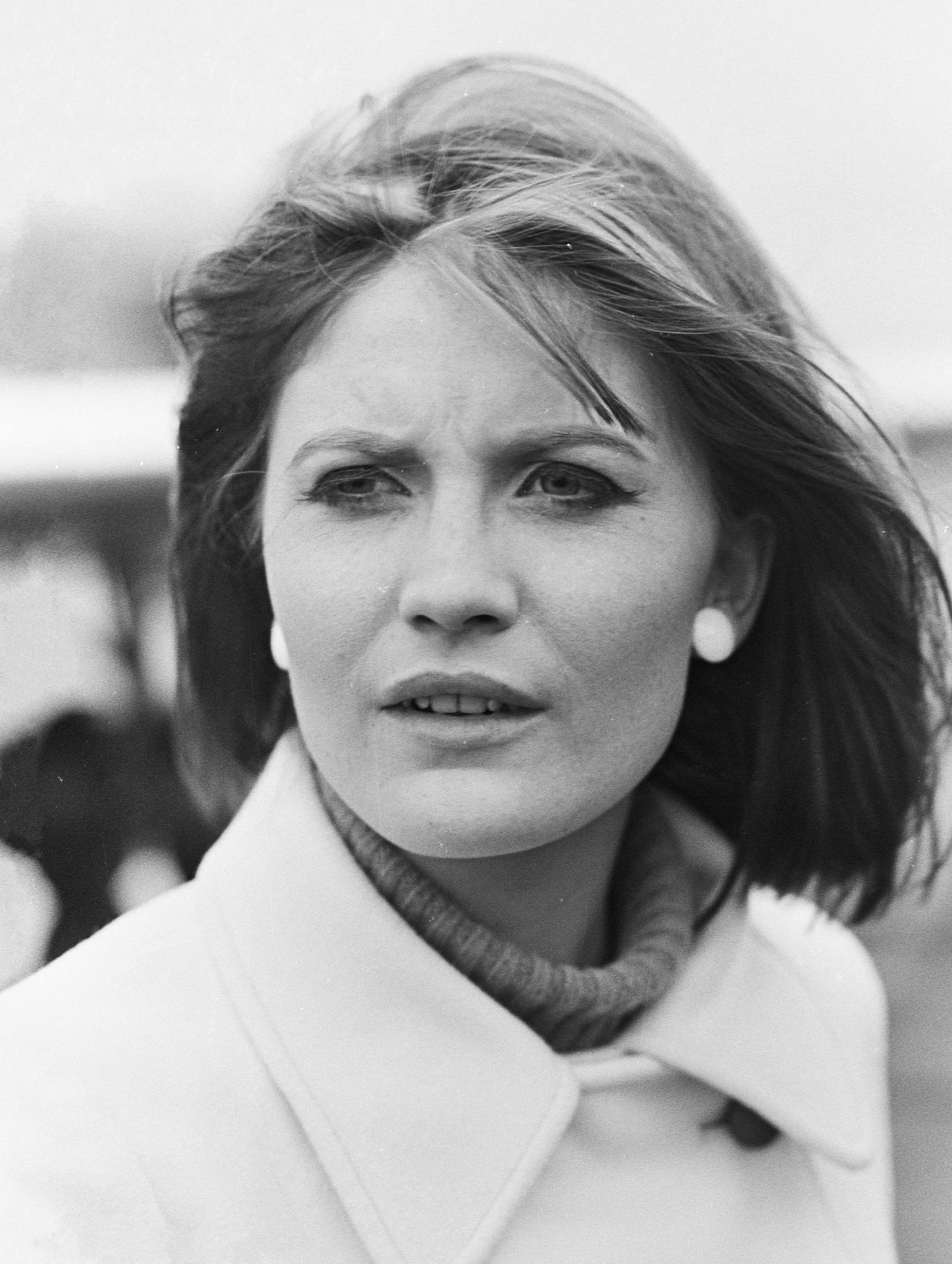 While the differences between "take five" of this first version of the song and the finished product as we know it are enormous, some of the obvious ones are vocally. Onto track three of "take five" was recorded Paul on lead vocals with John and George peppering the verses with background harmonies, including their three-part harmony on the lyric “every single day of my life” at the end of each verse. In the choruses, Paul sings the falsetto lines “somehow, someway” where we’re used to hearing the horns chime in. And, to top it off, there are the “I need your love” harmonies from the threesome that appear to resemble the verses of Sandie Shaw’s 1964 UK #1 rendition of the Burt Bacharach / Hal David classic “Always Something There To Remind Me.” While the differences between "take five" of this first version of the song and the finished product as we know it are enormous, some of the obvious ones are vocally. Onto track three of "take five" was recorded Paul on lead vocals with John and George peppering the verses with background harmonies, including their three-part harmony on the lyric “every single day of my life” at the end of each verse. In the choruses, Paul sings the falsetto lines “somehow, someway” where we’re used to hearing the horns chime in. And, to top it off, there are the “I need your love” harmonies from the threesome that appear to resemble the verses of Sandie Shaw’s 1964 UK #1 rendition of the Burt Bacharach / Hal David classic “Always Something There To Remind Me.”
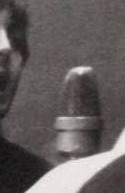 Interestingly, at the very conclusion of this vocal track, various humorous ad-libbed vocal blunders were recorded, undoubtedly because they deciphered at that point that this overdub wasn't good enough to be included in the final recording. After various timekeeping percussive sounds were recorded onto track four of the tape, these apparently being needed to keep the time straight for possible future overdubs, the session ended at 1:30 am the following morning. "Take five" was temporarily indicated as best on the tape box and thus was eventually released on "Anthology 2" in 1996 and Deluxe editions of the "Revolver" album in 2022. Upon examination, one can only wonder what elements they were planning on overdubbing to fill in the empty spaces that contained the monotonous organ drones. Interestingly, at the very conclusion of this vocal track, various humorous ad-libbed vocal blunders were recorded, undoubtedly because they deciphered at that point that this overdub wasn't good enough to be included in the final recording. After various timekeeping percussive sounds were recorded onto track four of the tape, these apparently being needed to keep the time straight for possible future overdubs, the session ended at 1:30 am the following morning. "Take five" was temporarily indicated as best on the tape box and thus was eventually released on "Anthology 2" in 1996 and Deluxe editions of the "Revolver" album in 2022. Upon examination, one can only wonder what elements they were planning on overdubbing to fill in the empty spaces that contained the monotonous organ drones.
 Later that day, April 8th, 1966, they re-entered EMI Studios at 2:30 pm for more work on the song. This time using EMI Studio Two, the band started from scratch, recording three more takes of the rhythm track, these being designated as "take six," "take seven" and "take eight." Onto track one of "take eight" was recorded Paul on bass, John on electric rhythm guitar and Ringo on drums. Onto track two was recorded George on lead guitar using a fuzz tone effect, playing what would be the distinctive horn parts in the verses and choruses. This overdubbed "take eight" was now deemed “best” and they ended the session at 9 pm. Later that day, April 8th, 1966, they re-entered EMI Studios at 2:30 pm for more work on the song. This time using EMI Studio Two, the band started from scratch, recording three more takes of the rhythm track, these being designated as "take six," "take seven" and "take eight." Onto track one of "take eight" was recorded Paul on bass, John on electric rhythm guitar and Ringo on drums. Onto track two was recorded George on lead guitar using a fuzz tone effect, playing what would be the distinctive horn parts in the verses and choruses. This overdubbed "take eight" was now deemed “best” and they ended the session at 9 pm.
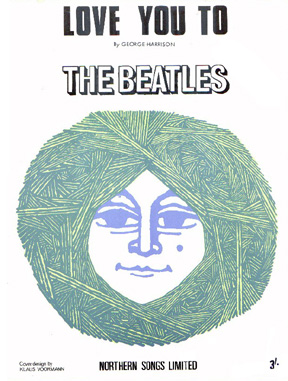 April 11th, 1966, was their next session and, while the primary focus of the day was George’s new composition “Love You To,” the first order of business was to perform overdubs to fill up the remaining tracks of "take eight" of this new version of “Got To Get You Into My Life.” Beginning at 2:30 pm in EMI Studio Two, these overdubs consisted of George adding more fuzz guitar riffs onto open areas of track two, Paul and George contributing the iconic dual guitar passage at the end of every verse and during the conclusion of the song on track three, and Paul adding lead vocals with John and George singing falsetto backing vocals on track four. (Notes taken by tape operator Phil McDonald, which have been referenced in Deluxe editions of "Revolver," are found to be erroneous upon listening to the various mixes in this 2022 release.) By 7 pm, after also recording the first three takes of George's "Love You To," the first of two recording sessions on this day ended. April 11th, 1966, was their next session and, while the primary focus of the day was George’s new composition “Love You To,” the first order of business was to perform overdubs to fill up the remaining tracks of "take eight" of this new version of “Got To Get You Into My Life.” Beginning at 2:30 pm in EMI Studio Two, these overdubs consisted of George adding more fuzz guitar riffs onto open areas of track two, Paul and George contributing the iconic dual guitar passage at the end of every verse and during the conclusion of the song on track three, and Paul adding lead vocals with John and George singing falsetto backing vocals on track four. (Notes taken by tape operator Phil McDonald, which have been referenced in Deluxe editions of "Revolver," are found to be erroneous upon listening to the various mixes in this 2022 release.) By 7 pm, after also recording the first three takes of George's "Love You To," the first of two recording sessions on this day ended.
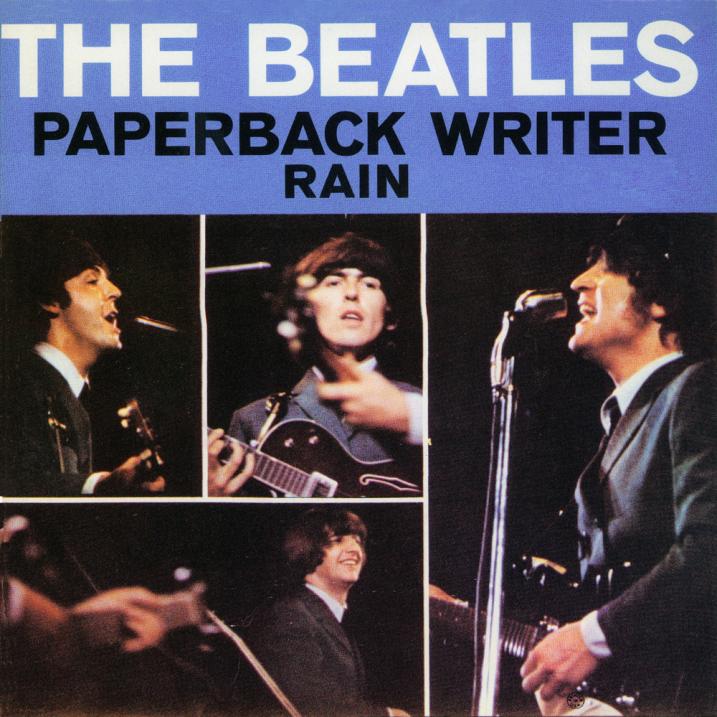 Thinking that "Got To Get You Into My Life" was now complete, The Beatles continued work on the album, the next two songs developed in the studio being the two compositions chosen for their next single, namely “Paperback Writer” and “Rain,” as well as other stronger songs being brought into the recording sessions at the time. However, two unnumbered mono mixes of "Got To Get You Into My Life" were created by engineer Peter Vince on April 25th, 1966 in Room 65 at EMI Studios. These mixes were made without the standard reverb and were used for cutting acetate discs, no doubt for Paul to hear what they had so far. This rocking guitar-driven version of the song is included in the 2022 Deluxe editions of "Revolver." Thinking that "Got To Get You Into My Life" was now complete, The Beatles continued work on the album, the next two songs developed in the studio being the two compositions chosen for their next single, namely “Paperback Writer” and “Rain,” as well as other stronger songs being brought into the recording sessions at the time. However, two unnumbered mono mixes of "Got To Get You Into My Life" were created by engineer Peter Vince on April 25th, 1966 in Room 65 at EMI Studios. These mixes were made without the standard reverb and were used for cutting acetate discs, no doubt for Paul to hear what they had so far. This rocking guitar-driven version of the song is included in the 2022 Deluxe editions of "Revolver."
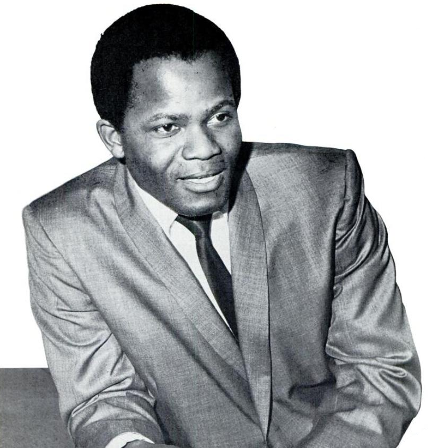 By May 18th, 1966, a decision was made to refine "Got To Get You Into My Life" for inclusion on their new album, the session beginning at 2:30 pm in EMI Studio Two. “We put trumpets on because it sounded like a trumpet number,” Paul stated at the time, adding: "None of the others did, so we haven’t used them on any other tracks, so it's a nice novelty." In his book "The Lyrics," Paul adds: "I'd been listening to a lot of American R&B and soul, and there were horn sections on those records - Joe Tex, Wilson Pickett, Sam & Dave, people like that. That was enough impetus for me to think, 'I'll have a go at that.' That's often how things happen with me. I'll hear something on the radio and think, 'Oh wow, I'm going to do my version of that.' So then we got some horn players, trumpets and saxophones, I think, into Abbey Road Studio Two, and I explained to them how I wanted it, and they got it immediately." By May 18th, 1966, a decision was made to refine "Got To Get You Into My Life" for inclusion on their new album, the session beginning at 2:30 pm in EMI Studio Two. “We put trumpets on because it sounded like a trumpet number,” Paul stated at the time, adding: "None of the others did, so we haven’t used them on any other tracks, so it's a nice novelty." In his book "The Lyrics," Paul adds: "I'd been listening to a lot of American R&B and soul, and there were horn sections on those records - Joe Tex, Wilson Pickett, Sam & Dave, people like that. That was enough impetus for me to think, 'I'll have a go at that.' That's often how things happen with me. I'll hear something on the radio and think, 'Oh wow, I'm going to do my version of that.' So then we got some horn players, trumpets and saxophones, I think, into Abbey Road Studio Two, and I explained to them how I wanted it, and they got it immediately."
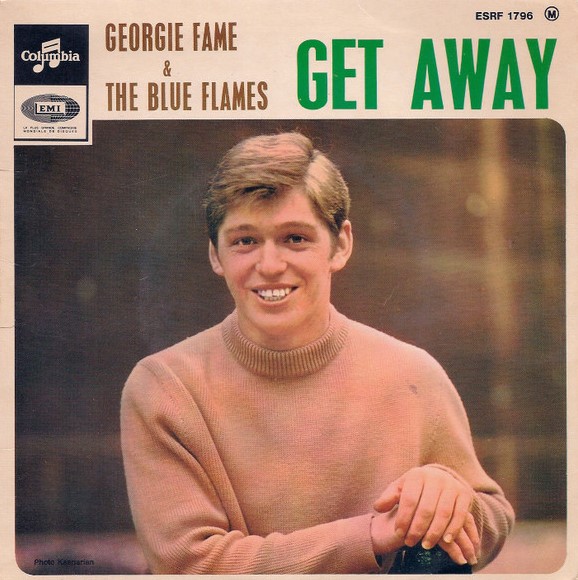 This novelty meant hiring five session musicians, two of whom Paul knew personally. During the early months of 1966, while The Beatles were on hiatus, Paul and Jane Asher would frequent London nightclubs, such as the Bag O’Nails in Soho, to hear the jazz-soul group Georgie Fame And The Blueflames. Paul evidently decided that the brass sound heard in this group would fit perfectly into “Got To Get You Into My Life” and, therefore, hired two of their horn players for a future session at EMI. This novelty meant hiring five session musicians, two of whom Paul knew personally. During the early months of 1966, while The Beatles were on hiatus, Paul and Jane Asher would frequent London nightclubs, such as the Bag O’Nails in Soho, to hear the jazz-soul group Georgie Fame And The Blueflames. Paul evidently decided that the brass sound heard in this group would fit perfectly into “Got To Get You Into My Life” and, therefore, hired two of their horn players for a future session at EMI.
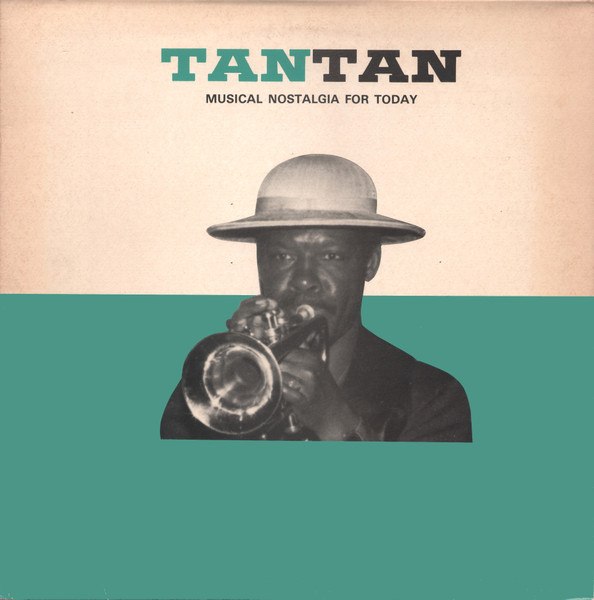 One of these players was Eddie "Tan Tan" Thornton. “I knew The Beatles – John and Paul particularly – from the studios and also from the London night club scene,” Eddie Thornton recalls. “In fact Paul met Linda Eastman when he was (attending) the Bag O’Nails Club watching us perform. But it was at the Scotch (of St. James) that Paul asked me to do this session with them.” One of these players was Eddie "Tan Tan" Thornton. “I knew The Beatles – John and Paul particularly – from the studios and also from the London night club scene,” Eddie Thornton recalls. “In fact Paul met Linda Eastman when he was (attending) the Bag O’Nails Club watching us perform. But it was at the Scotch (of St. James) that Paul asked me to do this session with them.”
 The baritone saxophonist from this group, Glenn Hughes, was to be another member of The Blue Flames to be in attendance at this Beatles' session, but he unfortunately fell sick that very morning. “Georgie (Fame) called me,” said tenor saxophonist of the group Peter Coe, “so I rushed up to the EMI Studios. Because I play tenor sax it meant having two tenors instead of a tenor and baritone…The Beatles wanted a definite jazz feel. Paul and George Martin were in charge. There was nothing written down but Paul sat at the piano and showed us what he wanted and we played with the rhythm track in our headphones. I remember that we tried it a few times to get the feel right and then John Lennon, who was in the control room, suddenly rushed out, stuck his thumb aloft and shouted ‘Got it!’ George Harrison got a little bit involved too but Ringo sat playing draughts in the corner.” The baritone saxophonist from this group, Glenn Hughes, was to be another member of The Blue Flames to be in attendance at this Beatles' session, but he unfortunately fell sick that very morning. “Georgie (Fame) called me,” said tenor saxophonist of the group Peter Coe, “so I rushed up to the EMI Studios. Because I play tenor sax it meant having two tenors instead of a tenor and baritone…The Beatles wanted a definite jazz feel. Paul and George Martin were in charge. There was nothing written down but Paul sat at the piano and showed us what he wanted and we played with the rhythm track in our headphones. I remember that we tried it a few times to get the feel right and then John Lennon, who was in the control room, suddenly rushed out, stuck his thumb aloft and shouted ‘Got it!’ George Harrison got a little bit involved too but Ringo sat playing draughts in the corner.”
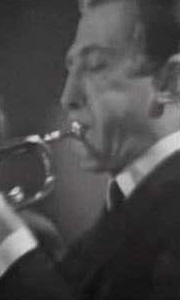 Freelance musician Les Condon, who was also a trumpeter hired for the session, gives a similar description of the day’s activities, stating: "It was interesting and unusual. I’ve never done a session quite like it before. The tune was a rhythm and bluesish sort of thing." He continues, "We were only on one number. Apparently, The Beatles felt it needed something extra. As for the song’s arrangement, well, they didn’t have a thing written down! We just listened to what they had done and got an idea of what they wanted. Then we went ahead from there and gradually built up an arrangement. We tried a few things, and Paul and George Martin decided between them what would be used." Freelance musician Les Condon, who was also a trumpeter hired for the session, gives a similar description of the day’s activities, stating: "It was interesting and unusual. I’ve never done a session quite like it before. The tune was a rhythm and bluesish sort of thing." He continues, "We were only on one number. Apparently, The Beatles felt it needed something extra. As for the song’s arrangement, well, they didn’t have a thing written down! We just listened to what they had done and got an idea of what they wanted. Then we went ahead from there and gradually built up an arrangement. We tried a few things, and Paul and George Martin decided between them what would be used."
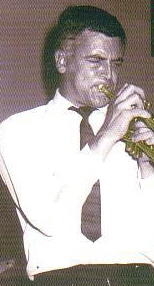 With two other session men, trumpeter Ian Hamer and tenor saxophonist Alan Branscombe, these five musicians added the soulful brass sounds heard on the finished product, but with one more unconventional detail added to the mix. Engineer Geoff Emerick explains: “No one had ever…heard brass the way I recorded it on ‘Got To Get You Into My Life.’…I close-miked the instruments – actually put the mics right down into the bells instead of the standard technique of placing them four feet away – and then applied severe limiting to the sound.” With two other session men, trumpeter Ian Hamer and tenor saxophonist Alan Branscombe, these five musicians added the soulful brass sounds heard on the finished product, but with one more unconventional detail added to the mix. Engineer Geoff Emerick explains: “No one had ever…heard brass the way I recorded it on ‘Got To Get You Into My Life.’…I close-miked the instruments – actually put the mics right down into the bells instead of the standard technique of placing them four feet away – and then applied severe limiting to the sound.”
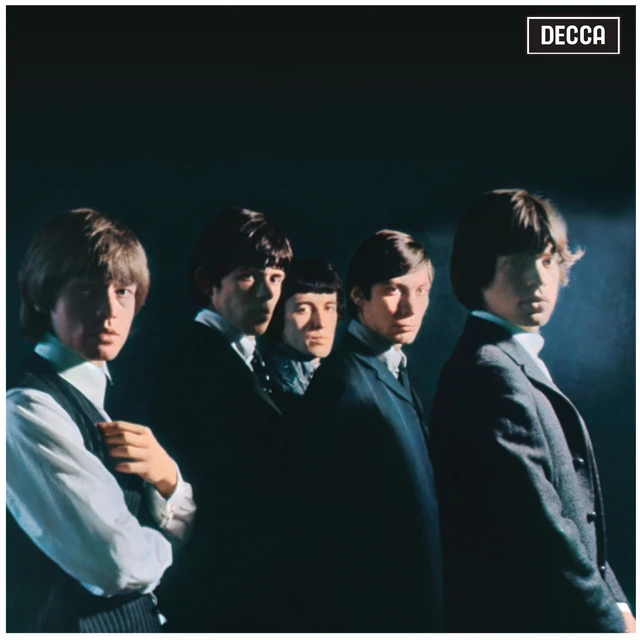 All five musicians received their payment of 18 pounds for the day as well as an instant resume that later amounted to a good degree of future sessions. “That led to a lot of extra work for me,” stated Eddie Thornton. “Through working with The Beatles I played with Jimi Hendrix, Sandie Shaw, The Small Faces and The Rolling Stones.” All five musicians received their payment of 18 pounds for the day as well as an instant resume that later amounted to a good degree of future sessions. “That led to a lot of extra work for me,” stated Eddie Thornton. “Through working with The Beatles I played with Jimi Hendrix, Sandie Shaw, The Small Faces and The Rolling Stones.”
Two different and overlapping brass overdubs were recorded directly onto tracks two and four of the existing four-track tape, thereby erasing George's lead guitar passages from track two and the vocals from track four. A mix of this newly filled "take eight" was later included on the 2022 Deluxe editions of "Revolver," Paul and George's iconic dual lead guitar passages from track three still being present. With all four tracks of the tape filled once again, three tape-to-tape reduction mixes were made, numbered takes 9 through 11.
 The first mix down ("take nine") was considered best, track one containing Paul's bass, John's rhythm guitar and Ringo's drums from the rhythm track, while track two combined both tracks that contained the brass. The iconic dual guitar riff from Paul and George that was contained on track three was not transferred in this reduction mix, track three now containing an overdub of Paul's lead vocals along with George on tambourine. Onto track four, Paul double-tracked his lead vocal along with John playing organ toward the song's conclusion. “I loved Paul’s singing on that song, too,” stated Geoff Emerick in his book “Here, There And Everywhere.” “He really let loose. At one point while Paul was recording the lead vocal, John actually burst out of the control room to shout his encouragement – evidence of the camaraderie and teamwork that was so pervasive during the ‘Revolver’ sessions.” The first mix down ("take nine") was considered best, track one containing Paul's bass, John's rhythm guitar and Ringo's drums from the rhythm track, while track two combined both tracks that contained the brass. The iconic dual guitar riff from Paul and George that was contained on track three was not transferred in this reduction mix, track three now containing an overdub of Paul's lead vocals along with George on tambourine. Onto track four, Paul double-tracked his lead vocal along with John playing organ toward the song's conclusion. “I loved Paul’s singing on that song, too,” stated Geoff Emerick in his book “Here, There And Everywhere.” “He really let loose. At one point while Paul was recording the lead vocal, John actually burst out of the control room to shout his encouragement – evidence of the camaraderie and teamwork that was so pervasive during the ‘Revolver’ sessions.”
 Two mono mixes were made of the song by George Martin, Geoff Emerick and 2nd engineer Phil McDonald, which ended the twelve-hour session at 2:30 am the following day. Since additional elements needed to be added to the recording, neither of these mixes were released. Two mono mixes were made of the song by George Martin, Geoff Emerick and 2nd engineer Phil McDonald, which ended the twelve-hour session at 2:30 am the following day. Since additional elements needed to be added to the recording, neither of these mixes were released.
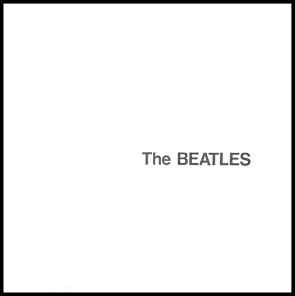 Another overdub was deemed necessary for “Got To Get You Into My Life,” this being a "dropped-in" passage of Paul and George playing what became the iconic lead guitar riff that was now missing from the song since track three was recorded over. With EMI Studios only having four-track recording capabilities at the time (unlike eight-track machines that American studios had been utilizing sporadically for many years prior), Paul's arrangement ideas were becoming quite laborious and cumbersome, something that wouldn't be rectified until EMI initiated eight-track capabilites during the "White Album" sessions of 1968. Another overdub was deemed necessary for “Got To Get You Into My Life,” this being a "dropped-in" passage of Paul and George playing what became the iconic lead guitar riff that was now missing from the song since track three was recorded over. With EMI Studios only having four-track recording capabilities at the time (unlike eight-track machines that American studios had been utilizing sporadically for many years prior), Paul's arrangement ideas were becoming quite laborious and cumbersome, something that wouldn't be rectified until EMI initiated eight-track capabilites during the "White Album" sessions of 1968.
 The dual guitar performance for this song, which was recorded on June 17th, 1966, in EMI Studio Two at approximately 8 pm, was recorded on track three between 1:49 to 2:06 of the recording, thus wiping out one of McCartney's lead vocal tracks and Harrison's tambourine during those 17 seconds. After this and another vocal overdub for “Here, There And Everywhere” were completed, the same EMI recording team created four more mono mixes of "Got To Get You Into My Life," none of which ever being released. The dual guitar performance for this song, which was recorded on June 17th, 1966, in EMI Studio Two at approximately 8 pm, was recorded on track three between 1:49 to 2:06 of the recording, thus wiping out one of McCartney's lead vocal tracks and Harrison's tambourine during those 17 seconds. After this and another vocal overdub for “Here, There And Everywhere” were completed, the same EMI recording team created four more mono mixes of "Got To Get You Into My Life," none of which ever being released.
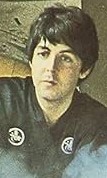 Not that this satisfied Paul McCartney. “There were only five (brass) players on the session,” remembered Geoff Emerick, “and when it came time to mix the song, Paul kept saying, ‘I wish we could make the brass sound bigger.’ George Martin replied, ‘Well, there’s no way we’re bringing them back in for another session – we’ve got to get the album wrapped up and there’s no more budget for outside players anyway.’ That’s when I came up with the idea of dubbing the horn track onto a fresh piece of two-track tape, then playing it back alongside the multritrack, but just slightly out of sync, which had the effect of doubling the horns.” Not that this satisfied Paul McCartney. “There were only five (brass) players on the session,” remembered Geoff Emerick, “and when it came time to mix the song, Paul kept saying, ‘I wish we could make the brass sound bigger.’ George Martin replied, ‘Well, there’s no way we’re bringing them back in for another session – we’ve got to get the album wrapped up and there’s no more budget for outside players anyway.’ That’s when I came up with the idea of dubbing the horn track onto a fresh piece of two-track tape, then playing it back alongside the multritrack, but just slightly out of sync, which had the effect of doubling the horns.”
 In the February 2013 issue of Musicians' Friend, Geoff Emerick adds a little more detail concerning this overdub: “We wanted a bigger sound on that brass section. How can we make it sound bigger? So the thing was we could double-track it, but there were no more tracks left. So we actually recorded it or copied, either copied it or recorded it, onto a stereo piece of tape. When we came to do the mix it was a question of just 'fingers crossed' and starting up the stereo machine 'cause there was no synching them together, in reality. Just came with the grease pencil mark. You used to move it and start at a certain point in the music and hopefully it would marry. So we sent this first double track, in fact more than theory, the brass from a separate tape machine.” In the February 2013 issue of Musicians' Friend, Geoff Emerick adds a little more detail concerning this overdub: “We wanted a bigger sound on that brass section. How can we make it sound bigger? So the thing was we could double-track it, but there were no more tracks left. So we actually recorded it or copied, either copied it or recorded it, onto a stereo piece of tape. When we came to do the mix it was a question of just 'fingers crossed' and starting up the stereo machine 'cause there was no synching them together, in reality. Just came with the grease pencil mark. You used to move it and start at a certain point in the music and hopefully it would marry. So we sent this first double track, in fact more than theory, the brass from a separate tape machine.”
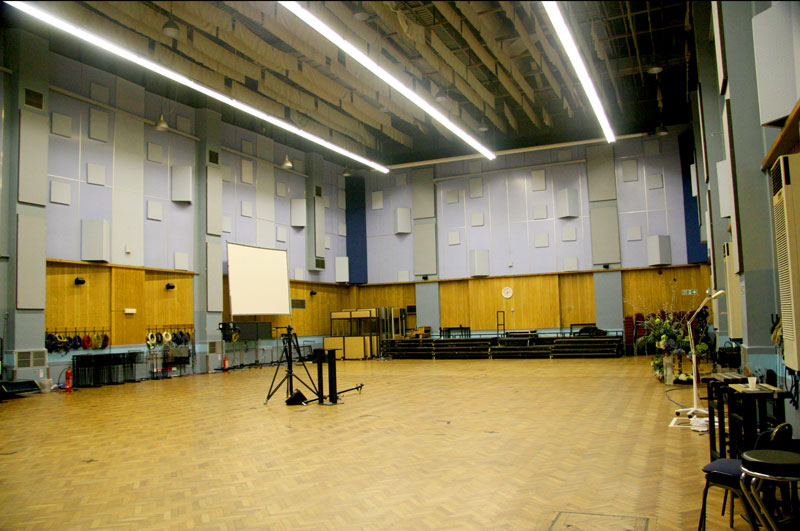 The procedure dtealiled above was done on June 20th, 1966, in the control room of EMI Studio One by the same EMI staff. First off, they made a copy of mono mix seven, which became remix eight, and then overdubbed onto that, slightly out of sync, the brass track from the original session tape of May 18th, 1966. This mono mix, which clocked in at 2:35 and features predominant bass and tambourine along with some awkward brass playing during the fade-out, was what finally became the released version on all mono pressings of the album. The procedure dtealiled above was done on June 20th, 1966, in the control room of EMI Studio One by the same EMI staff. First off, they made a copy of mono mix seven, which became remix eight, and then overdubbed onto that, slightly out of sync, the brass track from the original session tape of May 18th, 1966. This mono mix, which clocked in at 2:35 and features predominant bass and tambourine along with some awkward brass playing during the fade-out, was what finally became the released version on all mono pressings of the album.
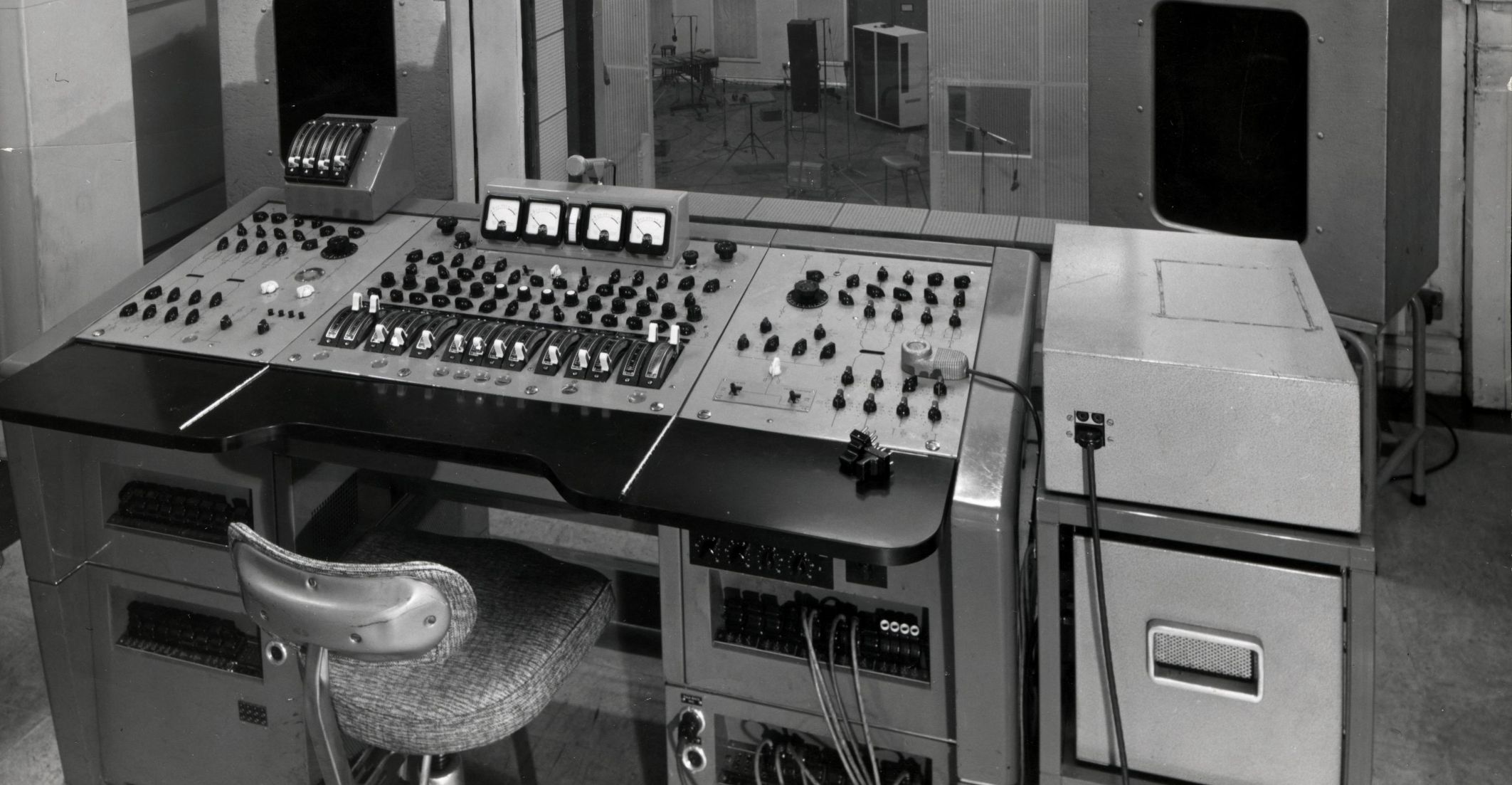 The stereo mix, not surprisingly, was not made in the same laborious fashion. On June 22nd, 1966, George Martin, Geoff Emerick and 2nd engineer Jerry Boys convened in the control room of EMI Studio Three to record the final stereo mixes needed for the finished album. For “Got To Get You Into My Life,” they simply used “take nine” as overdubbed from June 17th and mixed the rhythm track fully on the left channel (with the barely audible guitar work of John from the rhythm track) and the single tracked brass instruments fully on the right channel. Paul’s double-tracked vocals, the tambourine and the closing organ part are all centered in the mix, either the tambourine or organ disappearing when Paul's closing lead vocal rambling from the opposite track was chosen for the mix. The stereo mix, not surprisingly, was not made in the same laborious fashion. On June 22nd, 1966, George Martin, Geoff Emerick and 2nd engineer Jerry Boys convened in the control room of EMI Studio Three to record the final stereo mixes needed for the finished album. For “Got To Get You Into My Life,” they simply used “take nine” as overdubbed from June 17th and mixed the rhythm track fully on the left channel (with the barely audible guitar work of John from the rhythm track) and the single tracked brass instruments fully on the right channel. Paul’s double-tracked vocals, the tambourine and the closing organ part are all centered in the mix, either the tambourine or organ disappearing when Paul's closing lead vocal rambling from the opposite track was chosen for the mix.
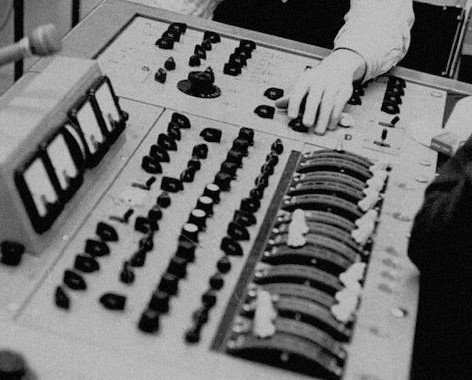 The fade out of the stereo mix is what attracts the most attention. For one thing, it is eight seconds shorter, clocking in at 2:27. Second, Paul’s final vocal adlibs during the fade-out, on the line “every single day of my life” is taken from the opposite double-tracked track as used on the mono mix. Thought was undoubtedly given to fading this mix earlier than the mono mix to hide the awkward brass playing at the end of the mono mix, thankfully, since this is the version that most people are familiar with. The fade out of the stereo mix is what attracts the most attention. For one thing, it is eight seconds shorter, clocking in at 2:27. Second, Paul’s final vocal adlibs during the fade-out, on the line “every single day of my life” is taken from the opposite double-tracked track as used on the mono mix. Thought was undoubtedly given to fading this mix earlier than the mono mix to hide the awkward brass playing at the end of the mono mix, thankfully, since this is the version that most people are familiar with.
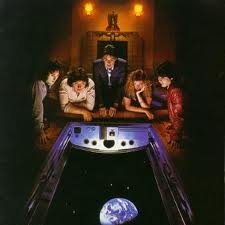 Three live performances of the song were recorded for release by Paul McCartney, the first being on December 29th, 1979 by his band Wings for the release “Concerts For The People Of Kampuchea.” Then, on October 17th, 1989, a live recording was made of Paul and his new band performing the song in Dortmund, Germany, the results appearing on his albums “Tripping The Live Fantastic” and “Tripping The Live Fantastic: Highlights!” Later, sometime between July 17th and 21st, 2009, Paul recorded the song at Citi Field in New York City, the recording being featured on his album "Good Evening New York City." Three live performances of the song were recorded for release by Paul McCartney, the first being on December 29th, 1979 by his band Wings for the release “Concerts For The People Of Kampuchea.” Then, on October 17th, 1989, a live recording was made of Paul and his new band performing the song in Dortmund, Germany, the results appearing on his albums “Tripping The Live Fantastic” and “Tripping The Live Fantastic: Highlights!” Later, sometime between July 17th and 21st, 2009, Paul recorded the song at Citi Field in New York City, the recording being featured on his album "Good Evening New York City."
 Sometime in 2022, George Martin's son Giles Martin, along with engineer Sam Okell, returned to the original tapes of "Got To Get You Into My Life" to create a vibrant new mix using new AI technology to separate the elements for a more interesting stereo experience. This new mix was included in the re-released "Revolver" album of that year. While they were at it, they also created mixes for "take five" of the first version of the song (with the opening Beatles dialogue detailed above), the newly discovered unnumbered mono mix of "take eight" from April 25th, 1966 (this also being included on 2025's "Anthology 4" album), and a stereo mix of the later "take eight" after the brass overdubs were recorded. Sometime in 2022, George Martin's son Giles Martin, along with engineer Sam Okell, returned to the original tapes of "Got To Get You Into My Life" to create a vibrant new mix using new AI technology to separate the elements for a more interesting stereo experience. This new mix was included in the re-released "Revolver" album of that year. While they were at it, they also created mixes for "take five" of the first version of the song (with the opening Beatles dialogue detailed above), the newly discovered unnumbered mono mix of "take eight" from April 25th, 1966 (this also being included on 2025's "Anthology 4" album), and a stereo mix of the later "take eight" after the brass overdubs were recorded.
Song Structure and Style
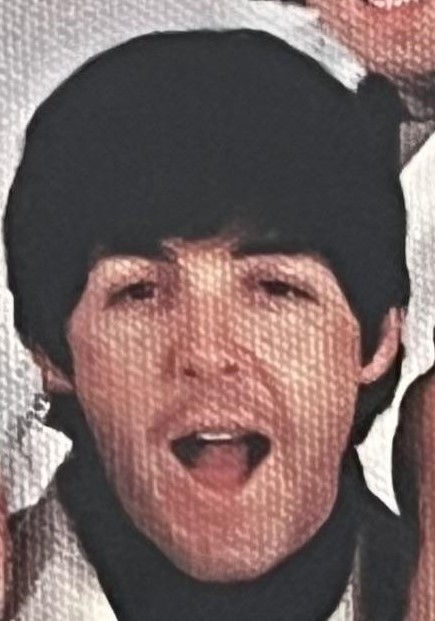 It’s easy to identify a similarity here in structure to early McCartney compositions such as “All My Loving” in relation to its use of a refrain after two verses begin proceedings. The full format used here, however, amounts to ‘verse/ verse/ refrain/ verse/ refrain (extended)/ refrain’ (or aababb) with a brief introduction and faded conclusion added in. (Note that the brief two-measure guitar solo at the end of the second refrain hardly constitutes being signified as an instrumental section or “solo,” leading me to identify it as only an extended version of the refrain.) It’s easy to identify a similarity here in structure to early McCartney compositions such as “All My Loving” in relation to its use of a refrain after two verses begin proceedings. The full format used here, however, amounts to ‘verse/ verse/ refrain/ verse/ refrain (extended)/ refrain’ (or aababb) with a brief introduction and faded conclusion added in. (Note that the brief two-measure guitar solo at the end of the second refrain hardly constitutes being signified as an instrumental section or “solo,” leading me to identify it as only an extended version of the refrain.)
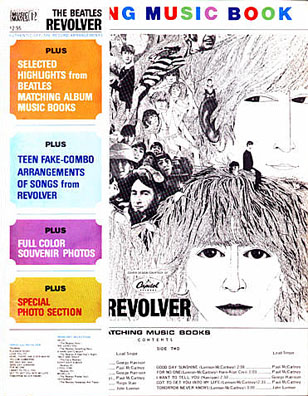 The four-measure introduction begins with a ringing bass note from Paul and quarter-note hi-hat tapping from Ringo in the first two measures with a little indecipherable mumbling from someone in the background, undoubtedly from the rhythm track. On top of this is the full-on arrival of the five-piece brass players performing the signature introductory hook of the recording. Their final note is extended through the third and fourth measures along with the arrival of Ringo’s hard-hitting tambourine, which is also played on the quarter notes. The four-measure introduction begins with a ringing bass note from Paul and quarter-note hi-hat tapping from Ringo in the first two measures with a little indecipherable mumbling from someone in the background, undoubtedly from the rhythm track. On top of this is the full-on arrival of the five-piece brass players performing the signature introductory hook of the recording. Their final note is extended through the third and fourth measures along with the arrival of Ringo’s hard-hitting tambourine, which is also played on the quarter notes.
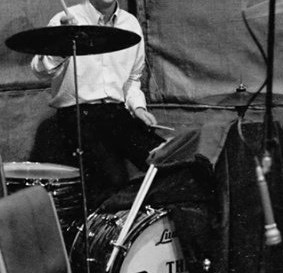 The sixteen-measure first verse is ushered in immediately afterward with Ringo’s full drum kit and Paul’s bass performing a pedal-point rhythm to set the groove. Also present, and almost inaudible except in the left channel of the stereo mix, are John’s rhythm guitar and George’s electric guitar playing from the rhythm track. Most prominent, however, are Paul’s double-tracked lead vocals along with the brass players filling in the gaps at the end of his phrases as George was originally doing on lead guitar (and actually is doing here if you listen very, very carefully). The brass passages are used to underscore Paul’s extended high notes, such as “find there” and “mind there.” Uninterrupted during these first eight measures are the relentless tambourine accents, added no doubt to drive the song along percussively due to the somewhat muffled remains of the original drum track. The sixteen-measure first verse is ushered in immediately afterward with Ringo’s full drum kit and Paul’s bass performing a pedal-point rhythm to set the groove. Also present, and almost inaudible except in the left channel of the stereo mix, are John’s rhythm guitar and George’s electric guitar playing from the rhythm track. Most prominent, however, are Paul’s double-tracked lead vocals along with the brass players filling in the gaps at the end of his phrases as George was originally doing on lead guitar (and actually is doing here if you listen very, very carefully). The brass passages are used to underscore Paul’s extended high notes, such as “find there” and “mind there.” Uninterrupted during these first eight measures are the relentless tambourine accents, added no doubt to drive the song along percussively due to the somewhat muffled remains of the original drum track.
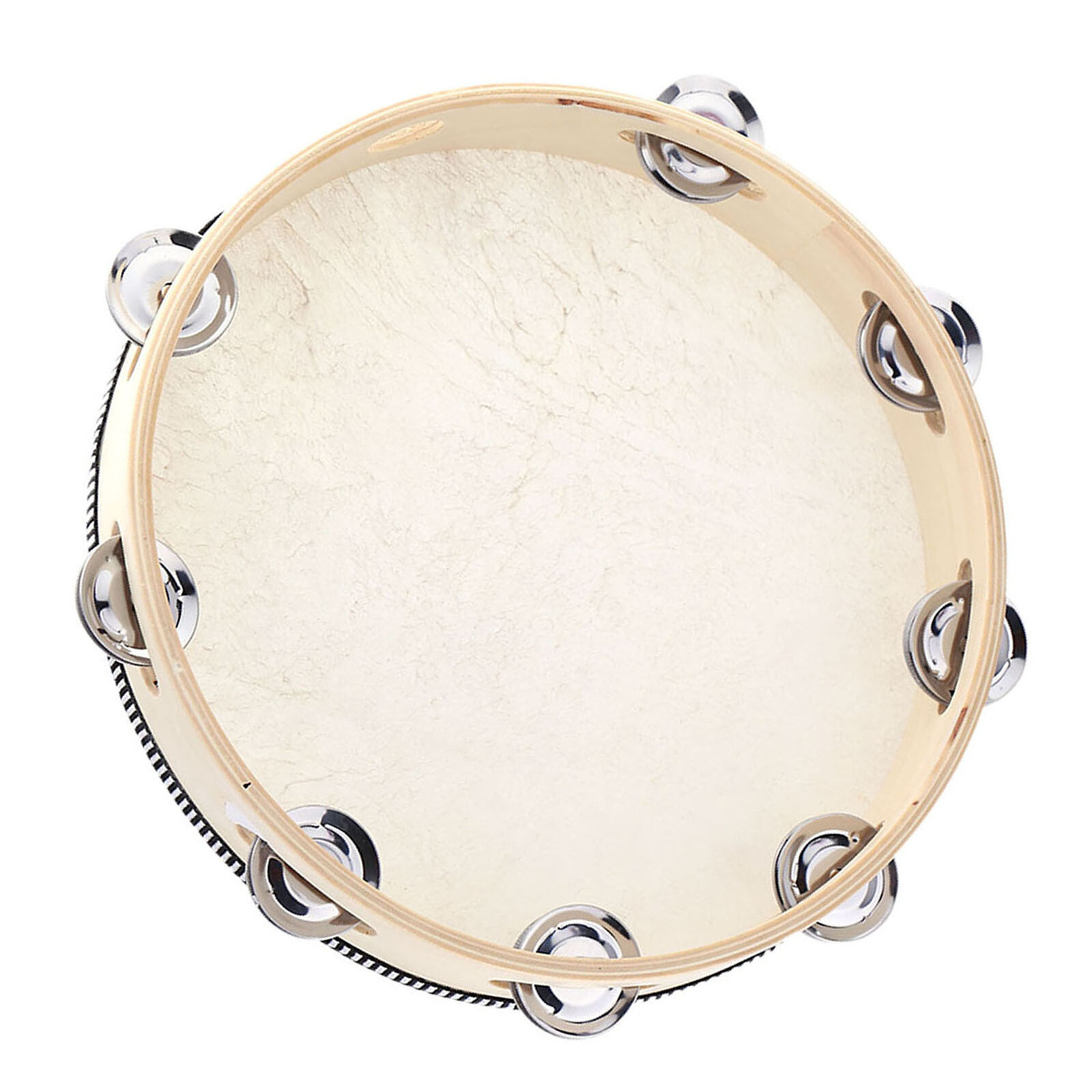 The second half of the verse alters to a descending brass pattern accompanied by Paul’s bass following suit, with a continuation of the melody line sung with intermittent syncopation as heard in the first half of the verse. The tambourine switches to being hit on the 2- and 4-beat of each measure for the ninth through fourteenth measures as Paul’s melody line becomes much more uniform and lands mostly on quarter notes (ev-ery sin-gle day…). When the word “life” is heard in the fifteenth measure, the brass holds out a single note as all the rest of the instruments take a breather, save for the hi-hat beat in measure fifteen and then the subdued triplet-rolls of Ringo from the rhythm track in the sixteenth measure. The second half of the verse alters to a descending brass pattern accompanied by Paul’s bass following suit, with a continuation of the melody line sung with intermittent syncopation as heard in the first half of the verse. The tambourine switches to being hit on the 2- and 4-beat of each measure for the ninth through fourteenth measures as Paul’s melody line becomes much more uniform and lands mostly on quarter notes (ev-ery sin-gle day…). When the word “life” is heard in the fifteenth measure, the brass holds out a single note as all the rest of the instruments take a breather, save for the hi-hat beat in measure fifteen and then the subdued triplet-rolls of Ringo from the rhythm track in the sixteenth measure.
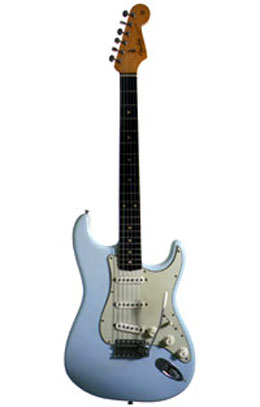 The second verse, which is also sixteen-measures long and identical musically, appears next. The six-measure refrain then follows which, interestingly, only comprises one lyrical melody line. The lyric of course is the title of the song which is accompanied by the re-emergence of the hard-hitting quarter-note tambourine playing along with the rest of the rhythm players. Immediately following the song’s title, the brass comes in to finish the refrain by playing their soulful rendition of the lead guitar passage George played on lead guitar on the rhythm track. The fourth measure comprises a "Beatle break" whereby the brass players take center stage to complete their melodic riff. After a brief snare roll, the fifth and sixth measure bring the band back in to vamp on the home key and set the stage for the next verse. The second verse, which is also sixteen-measures long and identical musically, appears next. The six-measure refrain then follows which, interestingly, only comprises one lyrical melody line. The lyric of course is the title of the song which is accompanied by the re-emergence of the hard-hitting quarter-note tambourine playing along with the rest of the rhythm players. Immediately following the song’s title, the brass comes in to finish the refrain by playing their soulful rendition of the lead guitar passage George played on lead guitar on the rhythm track. The fourth measure comprises a "Beatle break" whereby the brass players take center stage to complete their melodic riff. After a brief snare roll, the fifth and sixth measure bring the band back in to vamp on the home key and set the stage for the next verse.
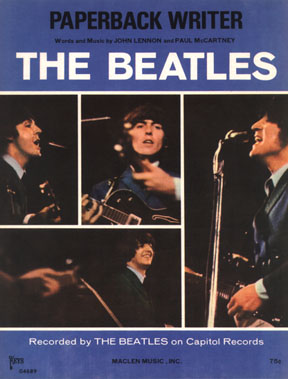 The third verse and refrain that follows are identical structurally and instrumentally, an exception being the noticeable disappearance of the tambourine just before the overdubbed lead guitar passage comes in, obviously indicating that the guitar work was overdubbed onto the track that contained the tambourine. (Audiophile note: Just when the tambourine disappears, a stray guitar flub is heard which was probably a little too difficult to punch out when the mix was made back in 1966.) When the fifth measure of the refrain comes in, only the hi-hat continues while the triple-tracked lead guitar overdub takes the refrain to eight measures this time around. An interesting observation is the striking similarity between the guitar riff played here and the repeated riff of “Paperback Writer” which was recorded two days after the first guitar overdub session. The third verse and refrain that follows are identical structurally and instrumentally, an exception being the noticeable disappearance of the tambourine just before the overdubbed lead guitar passage comes in, obviously indicating that the guitar work was overdubbed onto the track that contained the tambourine. (Audiophile note: Just when the tambourine disappears, a stray guitar flub is heard which was probably a little too difficult to punch out when the mix was made back in 1966.) When the fifth measure of the refrain comes in, only the hi-hat continues while the triple-tracked lead guitar overdub takes the refrain to eight measures this time around. An interesting observation is the striking similarity between the guitar riff played here and the repeated riff of “Paperback Writer” which was recorded two days after the first guitar overdub session.
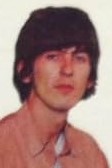 After the guitar solo spotlight is complete, an additional refrain is heard along with all of the instrumental elements coming back except, of course, for George's tambourine because the guitar overdub is still continuing. This is followed by what becomes a twelve measure (or sixteen measures in the mono mix) faded conclusion to the song. The first two measures of this conclusion feature McCartney’s single tracked rant “I was alone, I took a ride…” while the original rhythm track contains the only instruments heard therein. After the guitar solo spotlight is complete, an additional refrain is heard along with all of the instrumental elements coming back except, of course, for George's tambourine because the guitar overdub is still continuing. This is followed by what becomes a twelve measure (or sixteen measures in the mono mix) faded conclusion to the song. The first two measures of this conclusion feature McCartney’s single tracked rant “I was alone, I took a ride…” while the original rhythm track contains the only instruments heard therein.
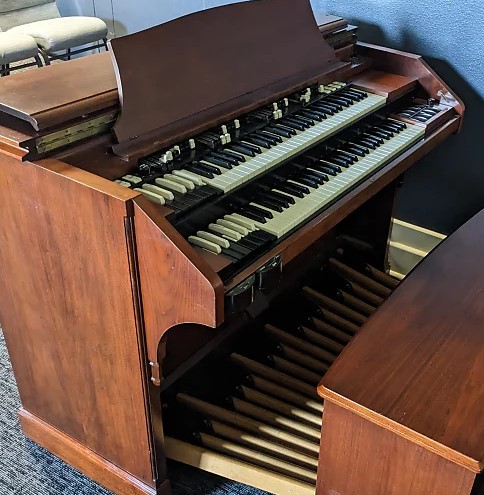 With the overdubbed guitar passage now complete, the tambourine is allowed to return along with, for its first appearance, an insistent Hammond organ part (attributed by most to John) being played on quarter notes along with the tambourine on the same track. The overdubbed horns then reappear to resume a variation and endless repetition of the song’s introduction. A dynamic touch to the brass playing is the addition of a Maynard Ferguson-like screeching high note that ends each melodic phrase in the final measures of the song. With the overdubbed guitar passage now complete, the tambourine is allowed to return along with, for its first appearance, an insistent Hammond organ part (attributed by most to John) being played on quarter notes along with the tambourine on the same track. The overdubbed horns then reappear to resume a variation and endless repetition of the song’s introduction. A dynamic touch to the brass playing is the addition of a Maynard Ferguson-like screeching high note that ends each melodic phrase in the final measures of the song.
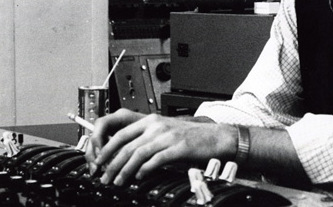 Then, suspiciously, when McCartney continues his adlib vocalizing with the words “then suddenly I see you,” the track that contains the tambourine and organ disappear. They then reappear just before Paul sings “did I tell you I need you.” Why? Although the reason isn’t explained, this was done manually during the mixing process because the tambourine/organ track comes back in sooner in the stereo mix than it does in the mono mix. Then, suspiciously, when McCartney continues his adlib vocalizing with the words “then suddenly I see you,” the track that contains the tambourine and organ disappear. They then reappear just before Paul sings “did I tell you I need you.” Why? Although the reason isn’t explained, this was done manually during the mixing process because the tambourine/organ track comes back in sooner in the stereo mix than it does in the mono mix.
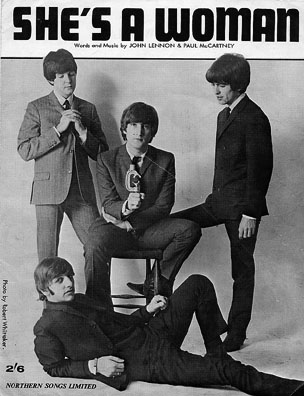 This, of course, is Paul’s baby all the way. His pedal-point bass playing punctuates the track throughout, propelling its incessant soulful groove. His vocal work is also without compare, reaching to the limits of his range to get the required feel, not unlike his attempts in “She’s A Woman” two years before. And leave it to Mr. McCartney to add the final touch on lead guitar to make sure his creation is just so. This, of course, is Paul’s baby all the way. His pedal-point bass playing punctuates the track throughout, propelling its incessant soulful groove. His vocal work is also without compare, reaching to the limits of his range to get the required feel, not unlike his attempts in “She’s A Woman” two years before. And leave it to Mr. McCartney to add the final touch on lead guitar to make sure his creation is just so.
John’s rhythm guitar work was unfortunately deeply buried in the mix, obviously deemed unnecessary in the latest arrangement, however he does make an appearance on organ at the end of the track as if to make sure his presence is felt somewhere. Harrison’s lead guitar passages from the rhythm track are also pushed toward indecipherability, although keen ears can still identify a job well done. His 'dropped-in' lead guitar work with Paul towards the song's conclusion is performed well, however, as was his tambourine overdub during the final moments of the song. Of course, Ringo could always be counted on to display a suitable performance on drums.
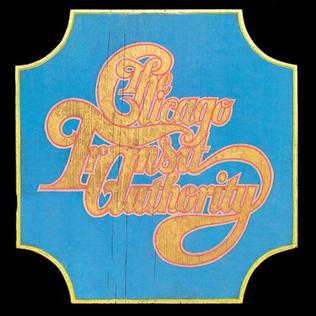 The brass work was performed amazingly and appears as the most prominent feature of the song, something unlike anything heard on a Beatles recording up to that time. So much so, in fact, that groups like Blood, Sweat And Tears, Lighthouse and Chicago picked up on the trend to inspire a new horn-based version of rock-and-roll in the late '60s and early '70s. "They were doing songs that nobody else was doing, and in different ways" remembered Peter Cetera when he first witnessed "The Big Thing," the early formation of the group Chicago back in 1968. "They were doing The Beatles' 'Magical Mystery Tour' and 'Got To Get You Into My Life' and different versions of rock songs with horns!" Cetera soon after joined the group and created yet another musical genre with his new band-mates, primarily inspired by The Beatles' wanderlust in extending the rock-and-roll instrumentation to include horns. The brass work was performed amazingly and appears as the most prominent feature of the song, something unlike anything heard on a Beatles recording up to that time. So much so, in fact, that groups like Blood, Sweat And Tears, Lighthouse and Chicago picked up on the trend to inspire a new horn-based version of rock-and-roll in the late '60s and early '70s. "They were doing songs that nobody else was doing, and in different ways" remembered Peter Cetera when he first witnessed "The Big Thing," the early formation of the group Chicago back in 1968. "They were doing The Beatles' 'Magical Mystery Tour' and 'Got To Get You Into My Life' and different versions of rock songs with horns!" Cetera soon after joined the group and created yet another musical genre with his new band-mates, primarily inspired by The Beatles' wanderlust in extending the rock-and-roll instrumentation to include horns.
 Only the astute Beatles' fan would know that this urgent love ballad was actually singing the praises of weed. Paul weaves his love of pot in and around the subject matter, hinting at the truth sparingly, such as with lines like “I was alone, I took a ride” and “maybe I could see another kind of mind there.” Otherwise, the listener is of the opinion that Paul desperately wants this newly found woman in his life. This is an example of an expertly written piece which tells a convincing story that leaves the intended impression. He didn’t want the world to know that he desired to “get” marijuana into his life. He instead wanted to disguise this message only to reveal it when he saw fit. Who knew? Only the astute Beatles' fan would know that this urgent love ballad was actually singing the praises of weed. Paul weaves his love of pot in and around the subject matter, hinting at the truth sparingly, such as with lines like “I was alone, I took a ride” and “maybe I could see another kind of mind there.” Otherwise, the listener is of the opinion that Paul desperately wants this newly found woman in his life. This is an example of an expertly written piece which tells a convincing story that leaves the intended impression. He didn’t want the world to know that he desired to “get” marijuana into his life. He instead wanted to disguise this message only to reveal it when he saw fit. Who knew?
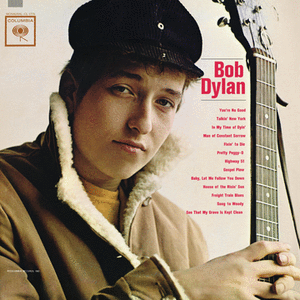 Therefore, he “suddenly” experiences grass for the first time (in 1964 with the help of Bob Dylan) and decides that he needs it “every single day” of his life. His wanting “just to hold” it, knowing they’d “meet again,” feeling he “was meant to be near” it, after experiencing his first "high" he knew he wanted to “stay there” – all these hidden innuendos are fun to discover after years of thinking of this as just another love song. Therefore, he “suddenly” experiences grass for the first time (in 1964 with the help of Bob Dylan) and decides that he needs it “every single day” of his life. His wanting “just to hold” it, knowing they’d “meet again,” feeling he “was meant to be near” it, after experiencing his first "high" he knew he wanted to “stay there” – all these hidden innuendos are fun to discover after years of thinking of this as just another love song.
American Releases
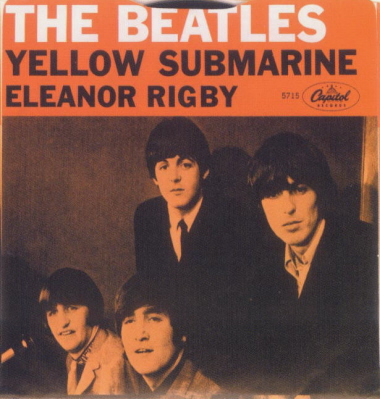 August 8th, 1966 was the American release date for the Capitol eleven-track “Revolver” album featuring “Got To Get You Into My Life” as the next-to-last song. Although over twenty-five hours of recording studio time was taken to complete the song, including five additional session musicians being hired, it surprisingly wasn’t issued as a Beatles single at the time, McCartney instead producing a cover version of the song for the group Cliff Bennett And The Rebel Rousers which peaked at #6 on the UK charts. As for the current Beatles single, the honors went to “Eleanor Rigby” and “Yellow Submarine.” However, the double-whammy of this song followed by the highly innovative “Tomorrow Never Knows” ended the album with a huge “bang.” The American version of the "Revolver" album got a compact disc release on January 21st, 2014, with both the mono and stereo versions contained on a single CD. August 8th, 1966 was the American release date for the Capitol eleven-track “Revolver” album featuring “Got To Get You Into My Life” as the next-to-last song. Although over twenty-five hours of recording studio time was taken to complete the song, including five additional session musicians being hired, it surprisingly wasn’t issued as a Beatles single at the time, McCartney instead producing a cover version of the song for the group Cliff Bennett And The Rebel Rousers which peaked at #6 on the UK charts. As for the current Beatles single, the honors went to “Eleanor Rigby” and “Yellow Submarine.” However, the double-whammy of this song followed by the highly innovative “Tomorrow Never Knows” ended the album with a huge “bang.” The American version of the "Revolver" album got a compact disc release on January 21st, 2014, with both the mono and stereo versions contained on a single CD.
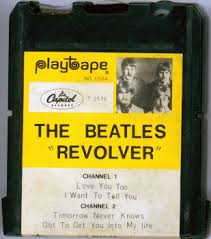 Sometime in 1967, Capitol released Beatles music on a brand new but short-lived format called "Playtapes." These tape cartridges did not have the capability to include entire albums, so two four-song releases of "Revolver" came out in this portable format, "Got To Get You Into My Life" being on one of them. These "Playtapes" are highly collectable today. Sometime in 1967, Capitol released Beatles music on a brand new but short-lived format called "Playtapes." These tape cartridges did not have the capability to include entire albums, so two four-song releases of "Revolver" came out in this portable format, "Got To Get You Into My Life" being on one of them. These "Playtapes" are highly collectable today.
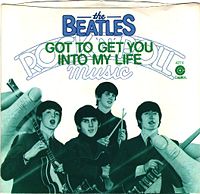 Of course, it was inevitable that this great song would be released as a single at some point. This point became May 31st, 1976, whereby it peaked (during the height of the disco era no less) at #7 on the American Billboard Hot 100 (#2 in Canada). With “Helter Skelter” as the b-side, the single was useful in introducing a new generation to the hysteria of the '60s. Promotional copies of this single pair a mono and stereo version of the a-side to accommodate both AM and FM airplay at the time, this being quite hard to find find today. Of course, it was inevitable that this great song would be released as a single at some point. This point became May 31st, 1976, whereby it peaked (during the height of the disco era no less) at #7 on the American Billboard Hot 100 (#2 in Canada). With “Helter Skelter” as the b-side, the single was useful in introducing a new generation to the hysteria of the '60s. Promotional copies of this single pair a mono and stereo version of the a-side to accommodate both AM and FM airplay at the time, this being quite hard to find find today.
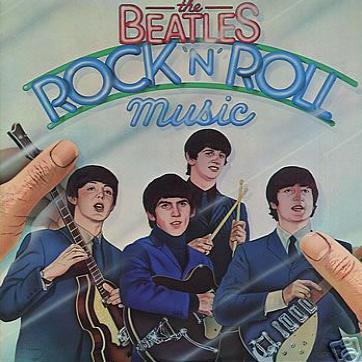 The purpose of the single was to promote a new double-album compilation titled “Rock ‘n’ Roll Music,” released on June 7th, 1976. No doubt because of the success of the single, the album peaked at #2 on the Billboard album chart that year. George Martin was consulted regarding the preparation of this album and, with access to only the Capitol mixes, decided it was necessary to reverse the right and left channels of the original stereo mix for both this album and the above mentioned single. Then on October 27th, 1980, Capitol re-released the double album as two volumes for budget sales, “Rock ‘n’ Roll Music Volume 2” containing "Got To Get You Into My Life." The purpose of the single was to promote a new double-album compilation titled “Rock ‘n’ Roll Music,” released on June 7th, 1976. No doubt because of the success of the single, the album peaked at #2 on the Billboard album chart that year. George Martin was consulted regarding the preparation of this album and, with access to only the Capitol mixes, decided it was necessary to reverse the right and left channels of the original stereo mix for both this album and the above mentioned single. Then on October 27th, 1980, Capitol re-released the double album as two volumes for budget sales, “Rock ‘n’ Roll Music Volume 2” containing "Got To Get You Into My Life."
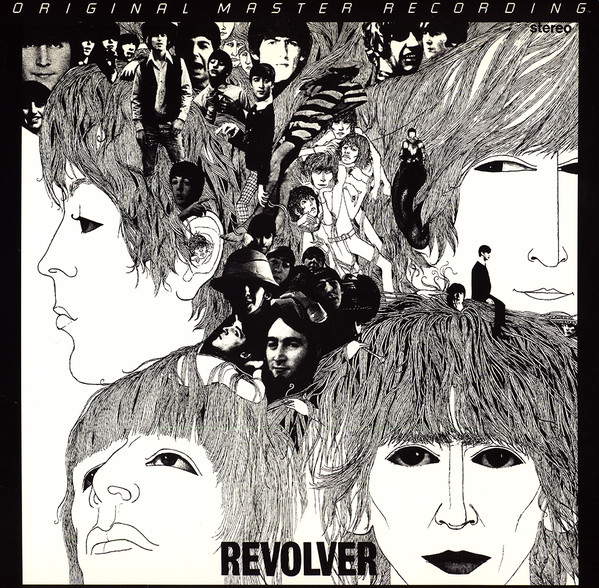 The first time the original British "Revolver” album was made available in the US was on the "Original Master Recording" vinyl edition released through Mobile Fidelity Sound Lab sometime in 1985. This album included "Got To Get You Into My Life" and was prepared utilizing half-speed mastering technology from the original master tape on loan from EMI. This version of the album was only available for a short time and is quite collectible today. The first time the original British "Revolver” album was made available in the US was on the "Original Master Recording" vinyl edition released through Mobile Fidelity Sound Lab sometime in 1985. This album included "Got To Get You Into My Life" and was prepared utilizing half-speed mastering technology from the original master tape on loan from EMI. This version of the album was only available for a short time and is quite collectible today.
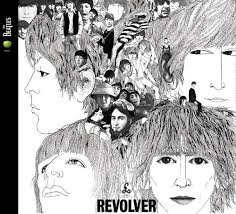 The official “Revolver” album was then released in the US on April 30th, 1987 on CD, a vinyl edition coming out on July 21st, 1987. This was then re-released in a vibrant remastered condition on CD on September 9th, 2009 and on vinyl on November 13th, 2012. A remarkable newly mixed edition of "Revolver" created by Giles Martin was released on vinyl and CD on October 28th, 2022. The official “Revolver” album was then released in the US on April 30th, 1987 on CD, a vinyl edition coming out on July 21st, 1987. This was then re-released in a vibrant remastered condition on CD on September 9th, 2009 and on vinyl on November 13th, 2012. A remarkable newly mixed edition of "Revolver" created by Giles Martin was released on vinyl and CD on October 28th, 2022.
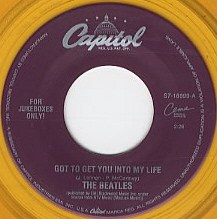 The single was then re-released on January 24th, 1994 on the Capitol Cema series “For Jukeboxes Only.” With “Helter Skelter” still as the b-side, this now rare single was printed on orange vinyl. The single was then re-released on January 24th, 1994 on the Capitol Cema series “For Jukeboxes Only.” With “Helter Skelter” still as the b-side, this now rare single was printed on orange vinyl.
March 18th, 1996 saw an interesting new version of the song released on “Anthology 2.” The unfinished “take five,” as recorded on their first session for this song, was included here, thus revealing The Beatles' first incarnation of its arrangement with George Martin playing the “drone” on the organ as mentioned above.
 September 9th, 2009 was the release date for the remastered CD box set “The Beatles In Mono,” which features the original mono mix with the doubled brass section and longer fade-out. This marks the first time this rare version of the song was made available on compact disc. The vinyl edition was first released on September 9th, 2014. September 9th, 2009 was the release date for the remastered CD box set “The Beatles In Mono,” which features the original mono mix with the doubled brass section and longer fade-out. This marks the first time this rare version of the song was made available on compact disc. The vinyl edition was first released on September 9th, 2014.
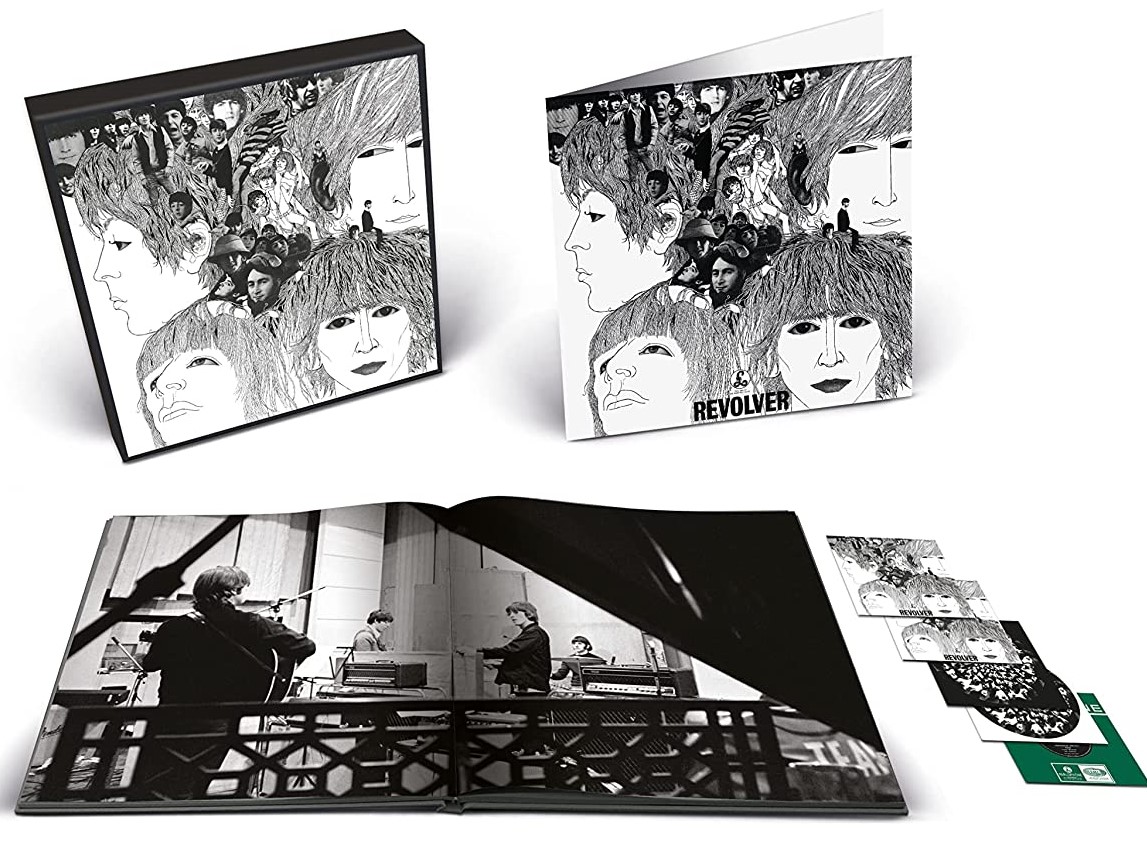 On October 28th, 2022, various new editions of the 14 track “Revolver” album were released that feature the amazing new stereo mix by Giles Martin. The “Special Edition Deluxe 2CD Set” features “Got To Get You Into My Life” in its new stereo mix and a “second version / unnumbered mix” from the original 1966 session tapes. The “Deluxe Edition,” which is available as a 5 CD box set and a 4LP / 1 EP box set, includes these versions as well as "First version - Take 5," "Second Version - Take 8" and the original mono master from 1966. The 2022 Giles Martin stereo mix of the album was also made available for the first time as a vinyl picture disc for a limited time. On October 28th, 2022, various new editions of the 14 track “Revolver” album were released that feature the amazing new stereo mix by Giles Martin. The “Special Edition Deluxe 2CD Set” features “Got To Get You Into My Life” in its new stereo mix and a “second version / unnumbered mix” from the original 1966 session tapes. The “Deluxe Edition,” which is available as a 5 CD box set and a 4LP / 1 EP box set, includes these versions as well as "First version - Take 5," "Second Version - Take 8" and the original mono master from 1966. The 2022 Giles Martin stereo mix of the album was also made available for the first time as a vinyl picture disc for a limited time.
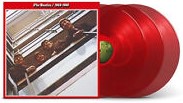 A new 50th Anniversay edition of the album "The Beatles / 1962 - 1966" ("The Red Album") was released on November 10th, 2023. This expanded release included 12 additional songs for a total of 38 tracks, including the new mix of "Got To Get You Into My Life" detailed above, and was made available as a double CD and as a triple vinyl release on both black and red vinyl. A new 50th Anniversay edition of the album "The Beatles / 1962 - 1966" ("The Red Album") was released on November 10th, 2023. This expanded release included 12 additional songs for a total of 38 tracks, including the new mix of "Got To Get You Into My Life" detailed above, and was made available as a double CD and as a triple vinyl release on both black and red vinyl.
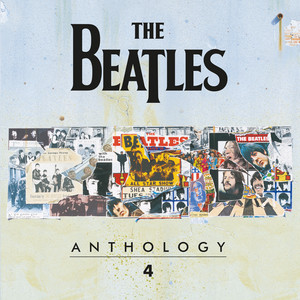 On November 21st, 2025, "Anthology 4" was released on both CD and vinyl, this also being made available within the "Anthology Collection" box set on CD and on vinyl. The "second version - unnumbered mix" of "Got To Get You into My Life" as recorded at EMI Studios on April 8th and 18th, 1966 was included here as it was in the 2022 "Special" and "Deluxe" editions of "Revolver" detailed above. On November 21st, 2025, "Anthology 4" was released on both CD and vinyl, this also being made available within the "Anthology Collection" box set on CD and on vinyl. The "second version - unnumbered mix" of "Got To Get You into My Life" as recorded at EMI Studios on April 8th and 18th, 1966 was included here as it was in the 2022 "Special" and "Deluxe" editions of "Revolver" detailed above.
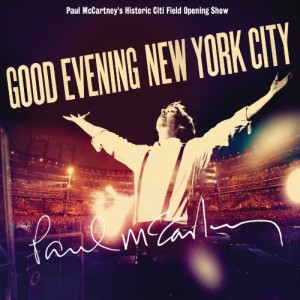 Four live albums feature the song as performed by Paul, the first being “Concerts For The People Of Kampuchea,” released March 30th, 1981, this being the last album to feature performances by “Paul McCartney And Wings.” The next two contain the exact same performance, namely “Tripping The Live Fantastic” (released on November 5th, 1990) and then “Tripping The Live Fantastic: Highlights!” (released November 12th, 1990). Finally, the album “Good Evening New York City” featured the song, this being released on November 17th, 2009. Four live albums feature the song as performed by Paul, the first being “Concerts For The People Of Kampuchea,” released March 30th, 1981, this being the last album to feature performances by “Paul McCartney And Wings.” The next two contain the exact same performance, namely “Tripping The Live Fantastic” (released on November 5th, 1990) and then “Tripping The Live Fantastic: Highlights!” (released November 12th, 1990). Finally, the album “Good Evening New York City” featured the song, this being released on November 17th, 2009.
 "Concerts For The People Of Kampuchea" album
|
Live Performances
Although The Beatles never brought “Got To Get You Into My Life” onto the concert stage, Paul McCartney made good use of the song. His December 29th, 1979 Wings performance for the benefit for the people of Kampuchea was a welcome live debut of the song.
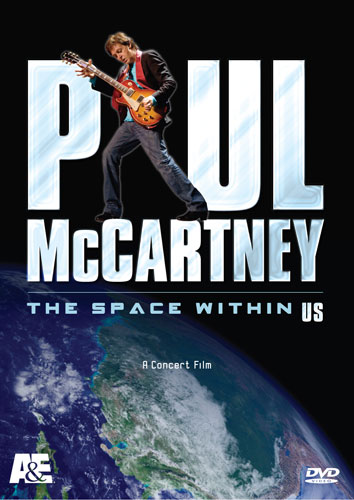 Then, he made sure it was included in the set lists of his “World Tour,” which spanned from September 26th, 1989 to July 29th, 1990. After letting the song rest for a while, he revived it in his “2004 Summer Tour,” which ran from May 25th to June 26th of that year, and then his 2005 “US Tour,” running from September 16th to November 30th of that year (as seen on his 2006 DVD "The Space Within US"). His “Summer Live ‘09” Tour also included the song, this tour going from July 11th to August 19th of that year, as did his “Good Evening Europe Tour,” which went from December 2nd to 22nd of 2009. He also included the song in most of the dates of his “Up And Coming Tour,” running from March 28th, 2010 to June 10th, 2011, and included it in some of the dates of his “On The Run Tour,” which ran from July 15th, 2011 to January 22nd, 2012. He then added it as an alternate during his "Out There" Tour, which ran from May 4th, 2013 to October 22nd, 2015. He then included it in most of his "Freshen Up" tour, starting with his Nagoya, Japan show on November 8th, 2018 and then until the tour concluded on July 13th, 2019. It was also in the set list of his "Got Back" tour, which ran from April 28th, 2022 to December 19th, 2024. Then, he made sure it was included in the set lists of his “World Tour,” which spanned from September 26th, 1989 to July 29th, 1990. After letting the song rest for a while, he revived it in his “2004 Summer Tour,” which ran from May 25th to June 26th of that year, and then his 2005 “US Tour,” running from September 16th to November 30th of that year (as seen on his 2006 DVD "The Space Within US"). His “Summer Live ‘09” Tour also included the song, this tour going from July 11th to August 19th of that year, as did his “Good Evening Europe Tour,” which went from December 2nd to 22nd of 2009. He also included the song in most of the dates of his “Up And Coming Tour,” running from March 28th, 2010 to June 10th, 2011, and included it in some of the dates of his “On The Run Tour,” which ran from July 15th, 2011 to January 22nd, 2012. He then added it as an alternate during his "Out There" Tour, which ran from May 4th, 2013 to October 22nd, 2015. He then included it in most of his "Freshen Up" tour, starting with his Nagoya, Japan show on November 8th, 2018 and then until the tour concluded on July 13th, 2019. It was also in the set list of his "Got Back" tour, which ran from April 28th, 2022 to December 19th, 2024.
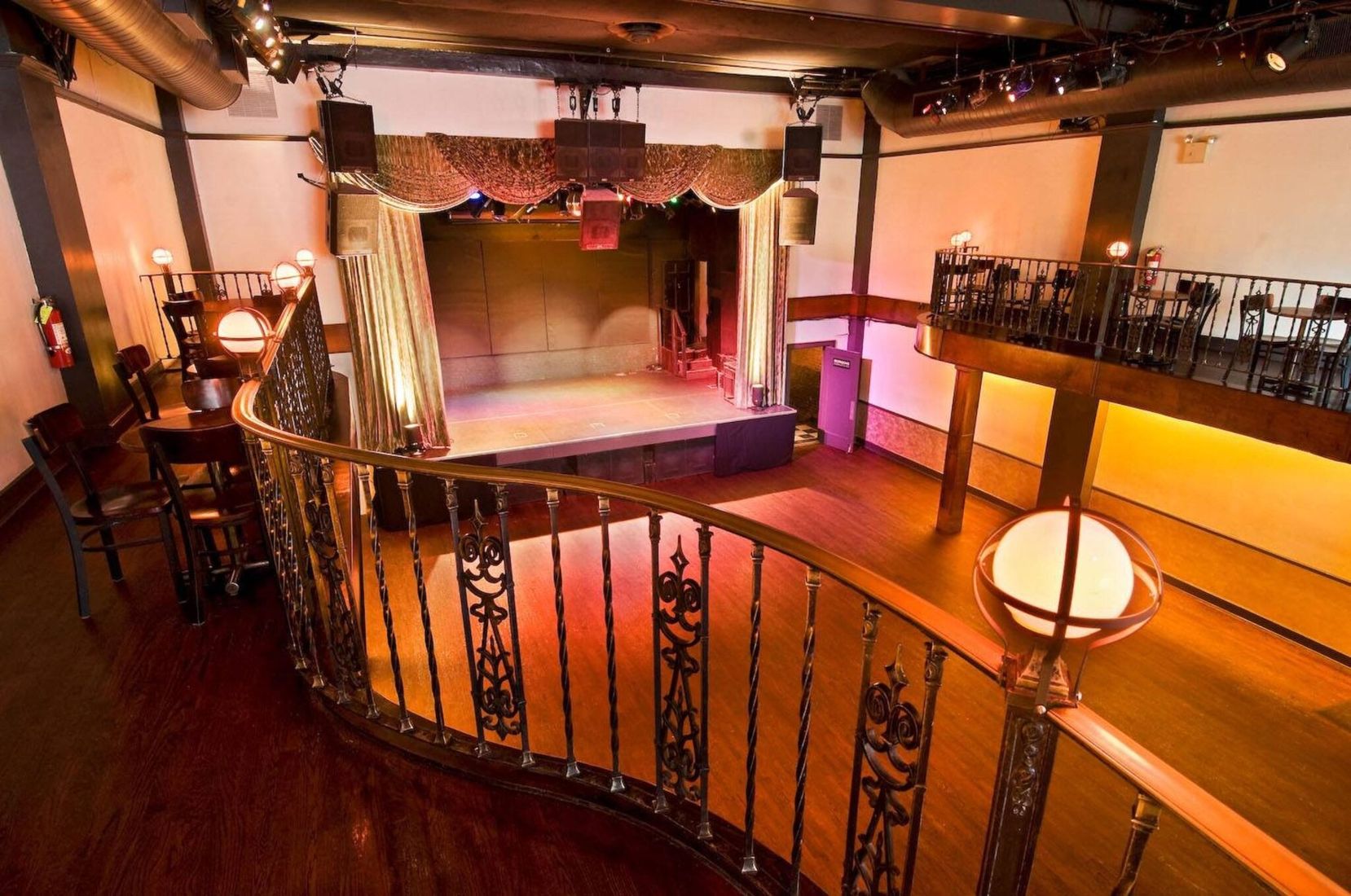 Interestingly, Paul McCartney and his current band played a surprise three night residency at the Bowery Ballroom in New York City on February 11th, 12th and 14th, 2025, this final night being Valentine's Day. The group played "Got To Get You into My Life" at all three of these performances at this elegant Manhattan venue. Interestingly, Paul McCartney and his current band played a surprise three night residency at the Bowery Ballroom in New York City on February 11th, 12th and 14th, 2025, this final night being Valentine's Day. The group played "Got To Get You into My Life" at all three of these performances at this elegant Manhattan venue.
Conclusion
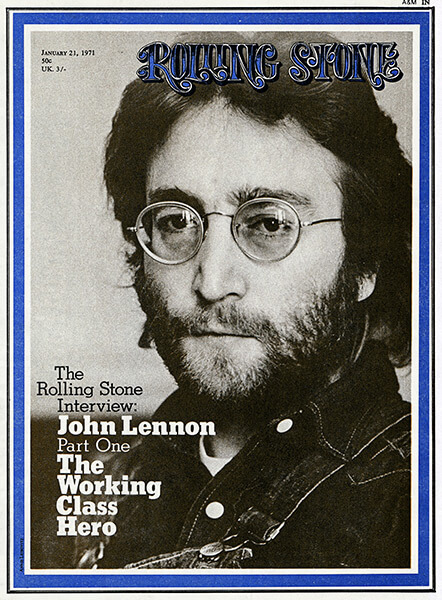 “It was the black music we dug,” John Lennon recalled during his 1971 Rolling Stone interview. So much so, in fact, that they actually went as far as arranging for the “Revolver” album to be recorded in the US, undoubtedly at the legendary Stax Studio in Memphis, Tennessee, so as to capture the bass and drum sounds heard on their favorite soul records of the time. “It was the black music we dug,” John Lennon recalled during his 1971 Rolling Stone interview. So much so, in fact, that they actually went as far as arranging for the “Revolver” album to be recorded in the US, undoubtedly at the legendary Stax Studio in Memphis, Tennessee, so as to capture the bass and drum sounds heard on their favorite soul records of the time.
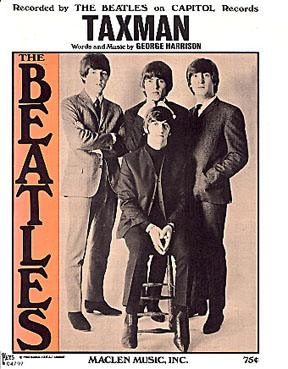 “We were going to record ‘Revolver’ in America,” Paul McCartney stated in August of 1966, “but they wanted a fantastic amount of money to use the facilities there. We thought we’d forget it because they were obviously trying to take us for a ride because we were The Beatles. We’d been thinking about going to record there for some time…I think there were only two tracks on the LP that would have sounded better if we’d cut them in America. ‘Taxman’ and ‘Got To Get You Into My Life,’ because they need that raw quality that you just can’t get in this country for some reason.” “We were going to record ‘Revolver’ in America,” Paul McCartney stated in August of 1966, “but they wanted a fantastic amount of money to use the facilities there. We thought we’d forget it because they were obviously trying to take us for a ride because we were The Beatles. We’d been thinking about going to record there for some time…I think there were only two tracks on the LP that would have sounded better if we’d cut them in America. ‘Taxman’ and ‘Got To Get You Into My Life,’ because they need that raw quality that you just can’t get in this country for some reason.”
 When The Beatles were in Memphis that month during their final American tour, a reporter asked: “It was said that you would record ‘Revolver’ in Memphis. What happened?” Paul’s answer was: “Little things kept getting in the way, like money. We wanted to come. A couple of tracks would have been much better if we had come. We wanted Steve Cropper, a guitarist for Booker T & The MG’s to A&R the session. He’s the best we’ve heard.” When The Beatles were in Memphis that month during their final American tour, a reporter asked: “It was said that you would record ‘Revolver’ in Memphis. What happened?” Paul’s answer was: “Little things kept getting in the way, like money. We wanted to come. A couple of tracks would have been much better if we had come. We wanted Steve Cropper, a guitarist for Booker T & The MG’s to A&R the session. He’s the best we’ve heard.”
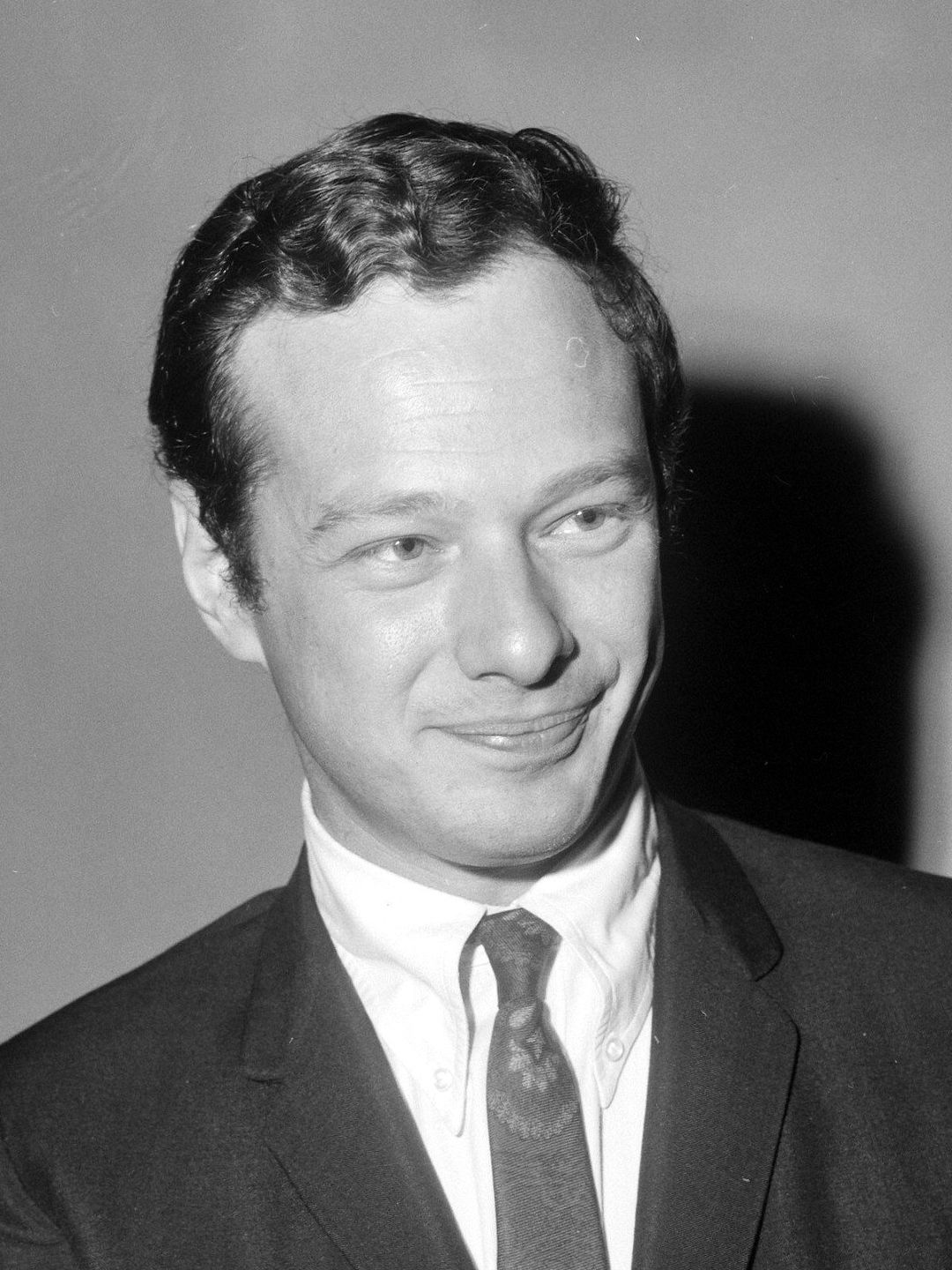 It has been documented that musician Steve Cropper was indeed earmarked to produce the album but that manager Brian Epstein had cancelled the Memphis sessions because of security problems. One can only imagine how “Got To Get You Into My Life” might have sounded with this legendary guitarist/musician involved, undoubtedly recruiting horn players Wayne Jackson and Andrew Love as heard on The Beatles' favorite Stax recordings by Sam and Dave, Wilson Picket and Otis Redding. As it is, the innovative work of George Martin and Geoff Emerick back at EMI Studios in London did bring amazing results. As Paul himself stated in 1966: “When we finished ‘Revolver,’ we realized that we had found a new British sound almost by accident.” A fortunate accident, I’m sure most will agree! It has been documented that musician Steve Cropper was indeed earmarked to produce the album but that manager Brian Epstein had cancelled the Memphis sessions because of security problems. One can only imagine how “Got To Get You Into My Life” might have sounded with this legendary guitarist/musician involved, undoubtedly recruiting horn players Wayne Jackson and Andrew Love as heard on The Beatles' favorite Stax recordings by Sam and Dave, Wilson Picket and Otis Redding. As it is, the innovative work of George Martin and Geoff Emerick back at EMI Studios in London did bring amazing results. As Paul himself stated in 1966: “When we finished ‘Revolver,’ we realized that we had found a new British sound almost by accident.” A fortunate accident, I’m sure most will agree!
“Got To Get You Into My Life”
Written by: John Lennon / Paul McCartney
-
Song Written: August 1964 - March, 1966
-
Song Recorded: April 7, 8, 11, May 18, June 17, 1966
-
First US Release Date: August 8, 1966
-
First US Album Release: Capitol #ST-2576 “Revolver”
-
US Single Release: Capitol #4274
-
Highest Chart Position: #7
-
British Album Release: Parlophone #PCS 7009 “Revolver”
-
Length: 2:35 (mono) 2:27 (stereo)
-
Key: G major
-
Producer: George Martin
-
Engineers: Geoff Emerick, Phil McDonald
Instrumentation (most likely):
-
Paul McCartney - Lead Vocals, Bass Guitar (1964 Rickenbacker 4001S), Lead Guitar (1962 Epiphone Casino ES-230TD)
-
George Harrison - Lead Guitar (1961 Sonic Blue Fender Stratocaster), tambourine
-
John Lennon - Rhythm Guitar (1965 Epiphone ES-230TD Casino), Organ (Hammond RT-3 w/ Leslie 145 cabinet)
-
Ringo Starr – Drums (1964 Ludwig Super Classic Black Oyster Pearl)
-
Eddie Thornton - Trumpet
-
Ian Hamer - Trumpet
-
Les Condon - Trumpet
-
Alan Branscombe - Tenor Saxophone
-
Peter Coe - Tenor Saxophone
Written and compiled by Dave Rybaczewski
|
IF YOU WOULD LIKE TO MAKE A DONATION TO KEEP THIS WEBSITE UP AND RUNNING, PLEASE CLICK BELOW!
Sign Up Below for our MONTHLY BEATLES TRIVIA QUIZ!
|